
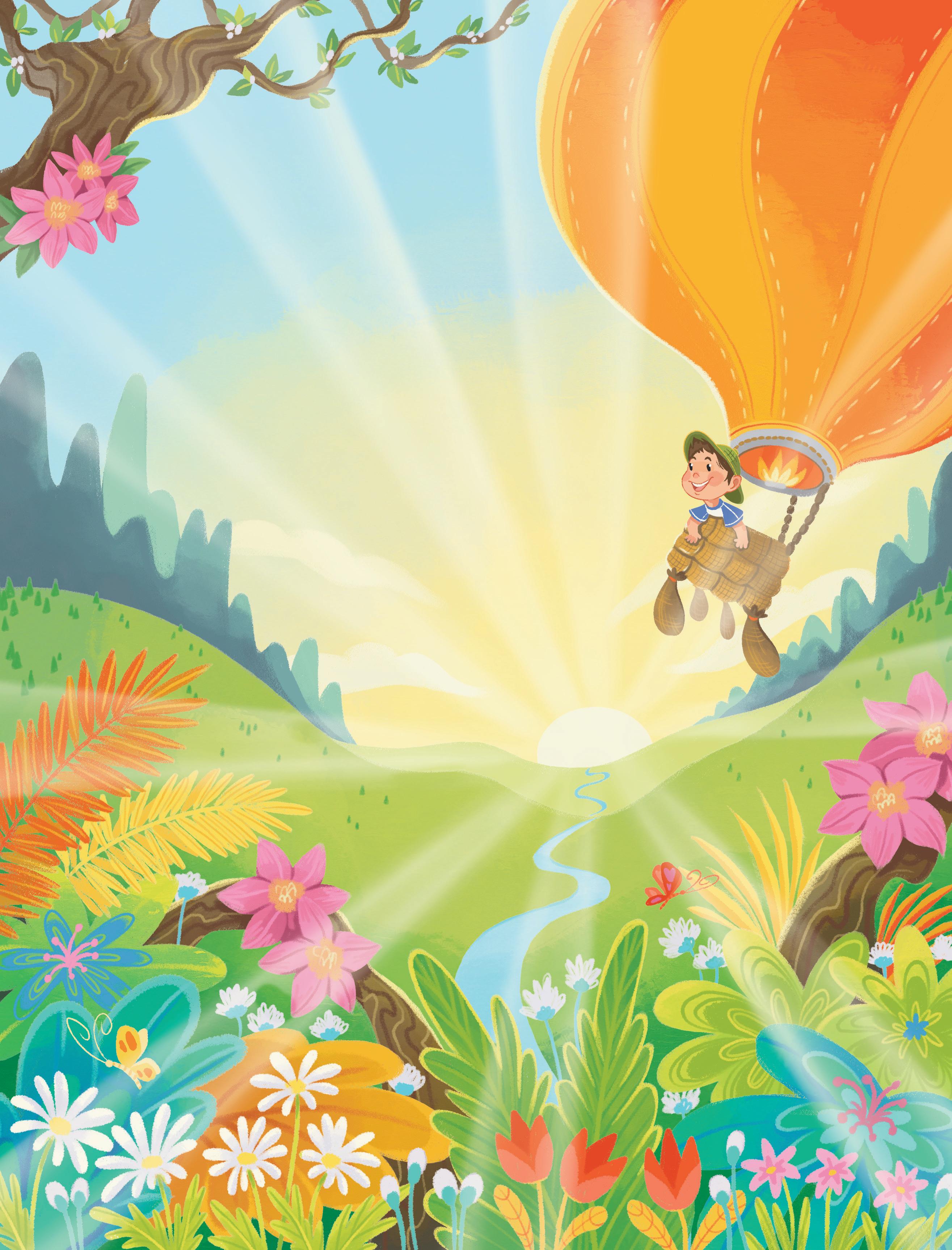




Academic Authors: Sneha Sharma, Anuj Gupta, Sayani Sarkar, Chandni Bhargava
Creative Director: Bhavna Tripathi
Book Production: Vishesh Agarwal, Amisha Gupta
VP, Learning: Abhishek Bhatnagar
All products and brand names used in this book are trademarks, registered trademarks or trade names of their respective owners.
© Uolo EdTech Private Limited
First impression 2025
This book is sold subject to the condition that it shall not by way of trade or otherwise, be lent, resold, hired out, or otherwise circulated without the publisher’s prior written consent in any form of binding or cover other than that in which it is published and without a similar condition including this condition being imposed on the subsequent purchaser and without limiting the rights under copyright reserved above, no part of this publication may be reproduced, stored in or introduced into a retrieval system, or transmitted in any form or by any means, electronic, mechanical, photocopying, recording or otherwise, without the prior written permission of both the copyright owner and the above-mentioned publisher of this book.
Book Title: Dawn Teacher Manual Level A Part-III
ISBN: 978-81-985187-8-1
Published by Uolo EdTech Private Limited
Corporate Office Address:
85, Sector 44, Gurugram, Haryana 122003
CIN: U74999DL2017PTC322986
Illustrations and images: www.shutterstock.com, www.stock.adobe.com and www.freepik.com
All suggested use of the internet should be under adult supervision.

he early years of education serve as the cornerstone for a child’s cognitive, social, and emotional development. This crucial stage is not solely about literacy and numeracy but about enabling holistic growth, ensuring that children develop into confident, inquisitive, and well-rounded individuals. The DAWN curriculum has been meticulously designed to be in alignment with the National Education Policy (NEP) 2020 and the National Curriculum Framework for Foundational Stage (NCF-FS) 2022, thereby integrating the Panchakosha framework—a five-dimensional approach that nurtures physical, emotional, intellectual, social, and moral development in young learners—within the scope of this curriculum.
The curriculum follows a structured 180-day teaching plan, ensuring a well-paced and progressive learning journey. The 4+1 Teaching Model offers a balanced approach, with four days dedicated to new learning and the fifth day—the Catch-up Carnival—focused on revision and personalised support. This model ensures that every child consolidates learning effectively while receiving additional reinforcement where needed.
A Curriculum Rooted in the Panchakosha Framework
The DAWN curriculum is not merely a sequence of lessons; it is an experiential and thoughtfully designed learning journey that strengthens all five dimensions of the Panchakosha framework:
1. Physical Development – Through movement-based activities, action rhymes, gross and fine motor skill exercises, yoga, and simple meditation practices, children enhance coordination, balance, and self-regulation.
2. Social and Emotional Growth – Circle Time discussions, role-play, games, storytelling, and collaborative activities encourage empathy, cooperation, self-expression, and social awareness.
3. Intellectual Growth – The structured and age-appropriate progression of literacy and numeracy concepts, moving from concrete to abstract understanding, strengthens problem-solving skills, logical thinking, and foundational cognitive abilities.
4. Spiritual and Moral Development – Stories, rhymes, discussions, and guided reflections help children understand fundamental values such as kindness, honesty, patience, and respect for both people and the environment. Guided yoga and meditation help children stay calm, focus better, and feel happy.
5. Sensory and Experiential Learning – The DIY section provides opportunities for art and craft, STEM-based explorations, rhymes, stories, and interactive games, ensuring hands-on engagement, creativity, and imaginative thinking.
The curriculum has been carefully structured for ease of implementation, ensuring that lessons are engaging, developmentally appropriate, and seamlessly executable with minimal resources. Pro tips, error alerts, and best-practice strategies equip teachers with the tools needed to deliver lessons effectively while maintaining a structured and stimulating learning environment.
This manual is not just a teaching guide but a comprehensive support system designed to make classroom instruction efficient, engaging, and impactful. Each lesson follows a well-defined sequence, ensuring a smooth flow of activities that build upon prior knowledge, making learning meaningful and enjoyable.
By following this manual, teachers can confidently create a nurturing, inclusive, and stimulating learning environment, ensuring that every child progresses at their own pace while developing a strong foundation for future learning and personal growth. Through this collaborative journey, let us empower young learners to explore, discover, and thrive—one meaningful lesson at a time.





1. Lesson Plan Structure: A Thoughtfully Designed Approach for Effective Learning

• Structured 180-Day Plan – The curriculum is designed with 150 teaching days dedicated to introducing and developing new concepts, and 30 revision days to reinforce learning and strengthen the understanding of one concept before moving forward to the next.


• 4+1 Teaching Model – A systematic and balanced approach where the first four days in a week focus on new learning, ensuring concept clarity and skill-building, while the fifth day is dedicated to revision and reinforcement. This structured progression helps children absorb, apply, and retain knowledge effectively.


• Catch-up Carnival: A Dedicated Revision and Support Day – The 5th day of every week is designed to consolidate learning and provide targeted support through:
Revisiting and Strengthening Weekly Learning – A structured review session that ensures children have the opportunity to recap and reinforce concepts introduced during the week.
Providing Additional Support for Struggling Learners – Carefully designed guidance, scaffolding techniques, and engaging revision strategies to help children who need extra time and practice to grasp key ideas.


• Strong Emphasis on Core Subjects – The curriculum provides comprehensive coverage of General Awareness, Literacy, and Numeracy. Every lesson is carefully designed to enhance cognitive skills, logical reasoning, and problem-solving abilities, ensuring children develop a strong academic foundation.

• Dynamic Circle Time Engagement – Thoughtfully structured Circle Time activities to kickstart the day on a positive note, and promote physical agility, emotional intelligence, social skills, moral values and spiritual awareness. Teachers are provided with a variety of interactive discussions, songs and rhymes, stories and role play scenarios, guided meditation, yoga practices, and mindfulness exercises to help children kickstart their day on a positive note.
• Hands-on Learning through the DIY Section – A dedicated enrichment segment at the end of each day, the DIY section offers STEM explorations, Art & Craft activities, storytelling sessions, song and dance, fun activities and interactive games. These experiential activities not only encourage creativity, motor development and sensory learning, but also add a flavour of joy in day-to-day learning.
3. Engaging Learning Approach: A Structured and Interactive Experience
•

Seamless Daily Flow – Each day follows a well-structured sequence, ensuring a smooth transition between activities and concepts. This thoughtful flow allows children to grasp new ideas naturally while reinforcing prior learning in a logical and engaging manner.



• Step-by-Step Lesson Guidance – Clear, concise, and easy-to-follow lesson plans provide teachers with structured guidance, ensuring confident, organised, and effective lesson delivery.

• Multisensory Learning Approach – Lessons are designed to stimulate multiple senses, incorporating visual, auditory, and kinesthetic activities. This approach enhances retention, strengthens comprehension, and makes learning more dynamic and interactive.




• Progressive & Play-Based Activities – Carefully curated play-based learning experiences align with children's developmental needs, ensuring a smooth transition from concrete exploration to pictorial representation and symbolic understanding. This gradual progression builds confidence and deepens understanding.

• Pro Tips for Teachers – Expert-backed teaching strategies and classroom management tips help educators enhance student engagement, encourage participation, and maximise learning outcomes.
• Error Alerts for Caution – Carefully curated guidelines on common teaching pitfalls ensure that lessons are delivered smoothly and effectively, helping teachers avoid misconceptions and common errors or mistakes.


• Creative Homework Ideas – Engaging, hands-on, and age-appropriate homework activities encourage playful learning beyond the classroom, reinforcing key concepts in a fun and meaningful way.


1. Use Fun Attention Getters – Clap patterns, call-and-response chants, or simple signals like “1-2-3, eyes on me!” keep kids engaged.
2. Use a Soft Signal for Attention – Instead of raising your voice, use a bell, a clapping pattern, or a simple phrase like "Hands on your head!"
3. Print-rich Environment – Use pictures and words to label materials in the classroom for creating a print-rich environment.

4. Create Clear Rules – Keep the rules simple and display them with pictures so kids can easily remember.
5. Use Positive Reinforcement – Notice good behavior and give compliments or badges often to encourage more of it. Praise good behaviour by saying "I love how quietly you are sitting!" instead of pointing out who isn’t.

6. Use Visual Schedules – A daily routine chart helps kids know what to expect and feel secure.
7. Make Transitions Exciting – Use songs or movement games to smoothly switch between activities.
8. Use Colour Cues for Noise Levels – Display a red sign for silent work, yellow for low talking, and green for discussion time.

9. Keep Instructions Short & Sweet – Young learners need clear, simple directions. Too many words can confuse them.
10. Use Movement Breaks – Brain breaks, stretching, or dancing help keep little bodies and minds active.
11. Have a Magic Word – A special word (like “popcorn”) can signal kids to listen or freeze.
12. Keep Supplies Organized – Label bins and shelves with pictures so kids can easily find and put away materials.

13. Use a Talking Object – Pass around a soft toy or ball; only the person holding it can talk.
14. Use Ice-cream Sticks – Write each student's name on an ice-cream stick, randomly pick one, and invite that child to answer.
15. Set Up a Turn-taking Chart – Write names in order so kids know when their turn is coming.

16. Mix Up Seating Arrangements – Change partner or group work setups to keep children engaged and encourage teamwork.
17. Have a "Mystery Motivator" – Randomly surprise children with a small reward for good behaviour (e.g., extra playtime).
18. End the Day on a Happy Note – Have a short "What did you learn today?" or "One thing that made you smile!" discussion before leaving.






Circle Time Action Game: Little Animals
General Awareness Sharing Tiffin Boxes and Talking About Food
Foundational Literacy Sound of Letter Oo Literacy Skillbook, page 36
Foundational Numeracy Meet Number 8 Numeracy Skillbook, page 44
DIY Fun with Air
STEM Exploration, pages 17–18
LO: Children will imitate actions of animals, engaging in movement and play.
1. Warm-Up: Begin by sitting in a circle. Sing:
• Hello, hello, can you clap your hands?
• Hello, hello, can you stomp your feet?
Let children clap, stomp, wiggle, and wave; as you guide them with simple movements.
2. Animal Movements: Say: Let’s become little animals! Call out names of common animals and demonstrate their actions:
• Hop like a bunny!
• Swim like a duck!
• Crawl like a puppy!
• Flap like a bird!
Let children take turns choosing an animal too.
3. Cool Down: Say: Now let’s be lazy like a sleepy kitten. Guide them to close their eyes, stretch, and breathe slowly to calm down.

LO: Children will talk about the food they eat and understand the value of sharing.
1. Warm-Up Discussion: Ask children to talk about what they usually bring in their lunchbox. Say: What yummy food do you have today? What do you like to eat the most? Let them respond freely and talk about their favourite food items.
2. Sharing Food: Talk about the joy of eating together and how sharing helps us build friendships. Say: When we share food, we show we care. We can try new things and make our friends happy too! Gently encourage children to take out their lunchboxes and offer a bite or piece of their food to a friend (only if safe and allowed), or simply talk about what they would like to share.
Ensure children wash their hands before sharing and eating their food.







LO: Children will identify objects starting with /o/ sound of letters Oo.
Resources: Literacy Skillbook, page 36; an orange
1. Warm-Up: Show an orange to the children and say its name clearly. Draw their attention to the beginning sound of the word. Say: /o/ /o/ orange. Ask children to repeat after you.
If an orange is not available you can draw an orange on the board.
2. Looking at Pictures: Turn to page 36 of the Skillbook and point to each picture one by one. Say the names aloud emphasising the beginning sound /o/. Encourage children to say the words clearly, focusing on the /o/ sound. Example: /o/ /o/ octopus.
3. Reinforcing the /o/ Sound: Read the text given on page 36 several times, highlighting the /o/ sound. Encourage children to listen carefully and repeat after you.

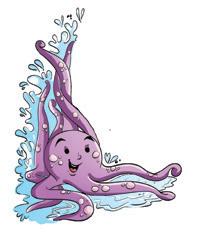


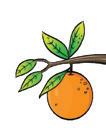
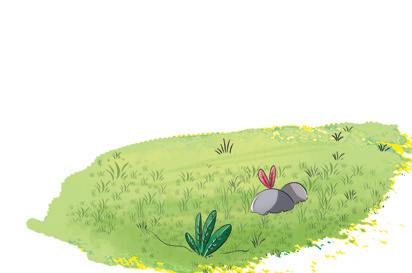


LO: Children will count up to 8 using concrete objects and engage in a fun counting game.
Resources: Numeracy Skillbook, page 44; some countable objects; a basket or bowl
1. Counting 8 Objects: Write 8 on the board and say: This is number 8. Show the children how to count up to 8 by touching each object one by one. Say: Let us count together! and encourage them to count aloud along with you. Repeat a few times to reinforce the number.

2. Fill in the Basket: Place a small basket in the center. Guide each child to take turns placing exactly 8 objects in the basket. The whole group counts aloud as they place each item. Repeat with different children to ensure everyone practices counting to 8.
3. Meet Number 8: Refer to page 44 of the Skillbook. Recite the poem 2–3 times and then help them count the 8 squirrels. Finally, ask children to count and show 8 fingers. Monitor and guide wherever required.






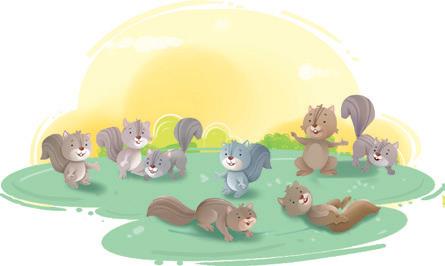



Take a few objects. Practice counting 8 with the help of those objects.
LO: Children will learn that moving air can blow things away through a fun activity.
Resources: STEM Exploration, pages 17–18; bits of paper
1. Warm-Up: Demonstrate and guide children to gently blow air on their hands. Ask: How does it feel on your hand? Let children share their responses. Then say: That’s called a breeze—moving air we can feel!
2. Fun with Air: Ask children to place small bits of paper on a table. Guide them to blow gently on them and watch them move. Say: What made the paper move? Guide them to say air. Then say: Moving air is called wind. We can feel it when we blow. Let them try again and enjoy the experience.




Ask children to clean up the space by picking the bits of paper after the activity.
Circle Time
Roll the Ball
General Awareness Importance of Food
Foundational Literacy Sound and Symbol of Letter Oo Literacy Skillbook, page 36
Foundational Numeracy Meet Number 8 Numeracy Skillbook, pages 44–45
DIY Fun with Air
STEM Exploration, pages 17–18
LO: Children will play a fun game of rolling the ball to improve hand-eye coordination.
Resources: A ball
1. Setting the Context: Gather children in a circle and hold a soft ball. Say: Today, we’re going to play a fun game with this ball. You will roll it to a friend and then catch it when it comes back! Let’s use our eyes and hands together.
2. Roll and Catch: Sit with the children in a circle. Roll the ball gently to one child and say: Catch it with your hands! After they catch it, guide them to roll it back. Say: Now roll it to me. Take turns rolling the ball to each child and letting them roll it back. Encourage children to look at the ball and keep their hands ready.
You can also ask children to roll the ball to a friend whose name you call out. For example: Roll the ball to Maya! This will help the children practise listening skills as well.


LO: Children will identify the importance of food and learn to distinguish between healthy and unhealthy food.
Introduction
1. Importance of Food: Begin with a short discussion. Say: Food gives us energy to play, learn, and grow strong. Ask simple questions like: What do you do after eating? Does food help us feel strong?
2. Talking about Food: Say: Some food helps us grow strong and healthy—like fruits, roti, rice, vegetables and eggs. Some food is tasty but not good for us every day—like chips or too many sweets.
Ask: What did you bring today? Is it something that helps you grow? Help them understand that healthy food gives us energy and we can enjoy treats sometimes, but not too much.

3. Healthy or Junk: Play a simple action game. Say: When I say healthy food, clap your hands! When I say unhealthy food, put your hands behind your back. Say examples one by one: apple, burger, roti, chips, milk, chocolate, banana, pizza. Keep it fun, energetic, and repeat a few times for better understanding.


Bring some sliced tomato and cucumber, and two slices of bread to make a healthy dish in DIY session.





LO: Children will be able to associate the /o/ sound with the symbol of letters Oo.
Resources: Literacy Skillbook, page 36
1. Recap: Point to the pictures on page 36 of the Skillbook and say their names aloud, emphasizing the /o/ sound at the beginning of the words. Ask the children to repeat after you.
2. Reinforcing the /o/ Sound: Read the text given on page 36 aloud a few times, emphasising the /o/ sound. Encourage children to repeat after you.
3. Blackboard Practice: Write the letter O on the board. Point to it and ask children to repeat: O says /o/ /o/ /o/. Repeat the same for the small letter o.
4. Blackboard Show: Invite children to trace letters Oo on the board with a piece of chalk. Encourage them to say: O says /o/ /o/ /o/ and o says /o/ /o/ /o/.
LO: Children will count to 8 and identify the symbol 8.
Resources: Numeracy Skillbook, pages 44–45; Number flashcards (from Skillbook)








1. Recap: Recite the rhyme from page 44 of the Skillbook and ask the children to recite it with you. Then, ask children to count and show 8 fingers. After that, hand out the individual flashcards to the children. Then, ask them to count and hold up the flashcard showing 8 animals. Monitor and guide as required.
2. Symbol 8: Write 8 on the board and say: This is number 8. First let the children practise tracing the formation of number 8 in air with their index fingers. Then, invite them one by one to trace it on the board with chalk.
3. Tracing Number 8: Write number 8 on the floor. Call children one by one and guide them to trace 8 on the floor with their index fingers.
4. Meet Number 8: Ask the children to open page 44 of the Skillbook and trace number 8 first with their fingers and then with crayons. Then, help them count the 8 birds on page 45. Finally, guide them to count and colour the 8 oranges.























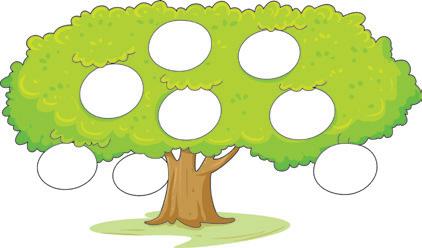

LO: Children will understand that moving air blows away light things. Resources: STEM Exploration, pages 17–18; light objects (feather, bits of paper, leaves, flower petals, etc.); heavy objects (book, bottle, pencil box, etc.)
1. Blowing Air: Take the heavy objects one by one and blow on them. Ask children to observe carefully. Ask: Did moving air move all the objects? Let children share their responses. Then, explain that lightly moving air can move only things that are light in weight (leaves, flower petals, bits of paper, etc.) whereas, it cannot move objects that are heavy (bottle, book, pencil box, etc.). Demonstrate with each object one more time for clarity.
2. Fun with Air: Ask children to open pages 17 and 18 of the STEM Exploration book. Demonstrate the activities one by one as instructed and guide children to tick the correct answers.




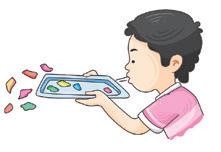
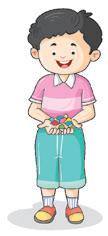

Try and blow air on different objects at home. Observe the things that move and the things that do not move.


Circle Time
General Awareness
Pick, Pinch and Place
Common Food Items We Eat
Foundational Literacy Letter Oo Literacy Skillbook, page 37
Foundational Numeracy Number 8 Numeracy Workbook, page 27
DIY Making a Sandwich
LO: Children will pick small things and put them in a container, enhancing their fine motor skills.
Resources: Small beans (rajma or chana) or beads; a cup or a bowl
1. Warm-Up: Gather children in a circle and say: Today, we will use our fingers to do something fun—picking up tiny things and putting them into a bowl! Let us see how strong and careful our fingers are.
2. Activity Time: Place a bowl of rajma/chana and two empty cups in the centre. Call one child at a time. Ask them to pick one bean at a time using their thumb and index finger and transfer it to the cup. Let each child take a short turn.
Give gentle support and praise: You are doing it so well! That’s how we make our fingers strong.

LO: Children will identify and name some common foods we eat.
Resources: Some food items like vegetables, bread, fruits, rice, roti, eggs (if possible)
1. Warm-Up: Begin by asking: What did you eat today? Let a few children share their responses. Encourage others to listen and join in. Then say: We all eat different foods every day, but some foods are common—many people eat them often!
2. Common Food Items: Show real food items if available (like a banana, roti, or rice) or simply draw them on the board or mention their names. Say the name clearly and ask children to repeat:
This is rice. Many people eat rice every day. Include simple, familiar foods like:
• Roti / Rice / Dosa / Idli
• Dal / Sambhar
• Vegetables
• Fruits (banana, apple)
• Milk / Curd
3. Food or Not: Call out different names—some food items and some non-food items (e.g., apple, eraser, rice, pencil, banana, comb). After each word, ask children to respond with an action:
• If it is a food item, they should pretend to eat it.
• If it is not a food item, they should show a thumbs down
Say: Let’s see who can listen carefully and show the right action! Make it lively and fun by changing your tone or pace.







LO: Children will identify the symbols Oo and trace letters Oo. Resources: Literacy Skillbook, page 37
1. Recap: Ask children to name some words starting with /o/ sound. Guide them to emphasise on the /o/ sound as they say each word. For example: /o/ /o/ octopus.
2. Symbols Oo: Write capital O on the board and explain the steps for writing O. Refer to the arrows on page 37 for guidance. Say: O goes round and round. Guide them to trace letter O in the air with their index fingers. Ask them to say: O says /o/ /o/ /o/. Repeat the same for small letter o.
3. Tracing O: Write capital letter O and small letter o on the board. Call the children one by one and guide them to trace the letters with their index fingers.
4. Letters Oo: Ask the children to open page 37 of the Skillbook and trace letters Oo first with their index fingers and then join the dots with a crayon to form letters O and o. Then guide them to say /o/ /o/ orange and trace the dotted lines to make the oranges and colour them.


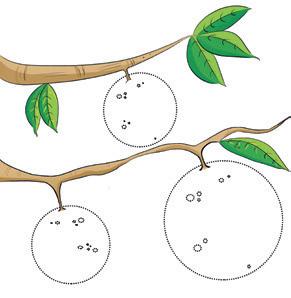

Practise writing O with a crayon on a sheet of paper and bring it to the class the next day.

LO: Children will identify the symbol 8 and count 8 objects.
Resources: Numeracy Workbook, page 27; some countable objects
1. Identifying Symbol 8: Write numbers 1–8 randomly on the board or on the floor. Call children one by one and ask them to point and show the symbol of number 8. Ensure everyone gets a turn.
2. Counting 8: Call children one by one. Give them some objects. Ask them to count and place only 8 objects on the table. Ensure everyone gets a turn.
3. Number 8: Ask children to open page 27 of the Workbook. First, guide them to identify and circle the symbol of number 8. Then, ask them to count and colour only 8 beads from the necklace.
LO: Children will make a healthy sandwich and enjoy eating it.



Resources: Slices of tomatoes, cucumber and, two bread slices (brought from home); butter; some salt; butter-knife or plastic knife
1. Spreading Butter: Begin by saying: Let us make a healthy sandwich today. Call children one by one and guide them to spread some butter on the bread slices with a butterknife or a plastic knife. Do NOT use a sharp-edged knife for spreading the butter on the bread slices.
2. Making a Sandwich: Guide children to place the cucumber and tomato slices on the bread and sprinkle some salt on top. Then, ask children to place the other bread slice on top. Finally, ask children to wash their hands and enjoy eating the sandwich.
Circle Time My Favourite Food
General Awareness Meals of the Day
Foundational Literacy Letter Oo Literacy Workbook, page 24
Foundational Numeracy Recalling Number 8
DIY The Colourful Sky Art and Craft, pages 16–17
LO: Children will talk about their favourite food.
Resources: A pretend microphone (duster, chalk or marker, etc.)
1. Warm-Up: Begin by saying: Today we will talk about what we like to eat. Ask children to think about the food they would like to eat and talk about it.
2. Modelling: Hold a pretend microphone and say: My favourite food is rice and dal. I love it because it is warm and tasty! Use gestures and expression to model how to talk about food. Encourage children to listen carefully.
3. Sharing Time: Invite one child at a time to come forward and share: My favourite food is… If a child is shy, gently prompt with questions like: Do you like something sweet or salty? / What do you like to eat at home? Smile, encourage, and celebrate every child’s response to build confidence and make it fun!

LO: Children will identify and talk about the three main meals—breakfast, lunch, and dinner.
Resources: 3 Empty plates
1. Warm-Up Discussion: Begin by asking: What did you eat in the morning before coming to school? / What do you eat when you go home from school? / What do you eat at night, before going to bed? Let children share freely. Say: We eat different meals at different times of the day.
2. Introduction to Meals: Draw three plates on the board or show three empty plates. Say: We eat three important meals—breakfast in the morning, lunch in the afternoon, and dinner at night. Use pretend play and say: I am eating breakfast—munch munch! Now lunch—yum yum! Dinner—slurp slurp! Encourage children to repeat after you. You may keep changing the sound that you wish.

3. Let’s Match the Meal: Tell the children: When I name a food, you show me when you usually eat it. Teach hand signs for each meal:
• Breakfast: Raise both hands to form a circle above your head (like the morning sun).
• Lunch: Hold your hand above your forehead, palm facing down (like the midday sun).
• Dinner: Hold both hands near your cheeks and close your eyes like you are sleepy (nighttime).
Call out food items one by one (e.g., milk, chapati, rice, roti, banana), and let children show the matching hand sign.







LO: Children will identify objects starting with /o/ sound and letters Oo.
Resources: Literacy Workbook, page 24
Introduction
1. Listen and Jump: Say aloud some words in a random order. Ask children to jump only if they hear a word starting with /o/ sound. Say, for example: apple, cat, orange, pot, octopus and so on.
2. Identifying Letters Oo: Write some letters, including O, on the board in a random order. Call children one by one and ask them to identify letter O. Ensure everyone gets a turn.
3. Letters Oo: Ask children to open page 24 of the Workbook. Guide them to match the letters Oo with objects starting with the /o/ sounds. Then ask them to identify and colour triangles with letters Oo.
LO: Children will recap counting number 8 through a fun creative activity.








Resources: Counting blocks or beads; 8 bindis (per child); 8 written on a paper (per child)
1. Air Tracing: Say: Let’s draw number 8 in the air! Guide children to use both hands to make a big “8” shape in the air. Say: It looks like a snowman or two round circles! Let them repeat this a few times.
2. Counting 8: Call children one by one. Ask them to count and pick 8 objects. Guide them to say, for example: 1, 2, 3, 4, 5, 6, 7, 8 – 8 blocks. Ensure everyone gets a turn.
3. Making Number 8: Give the sheet with 8 written on it to each child. First, ask them to trace 8 on the paper with their index fingers. Then, demonstrate and guide them to count and paste 8 bindis along the outline of number 8.
Keep a paper ready with 8 bindis pasted along the outline of 8. Show it to the children as a reference.
LO: Children will paste cotton inside clouds to complete a picture.
Resources: Art and Craft, pages 16–17; some cotton (per child); glue
1. Warm-Up Discussion: Ask children to share what they see in the sky. Welcome all responses. Then say: We see birds, clouds, a rainbow, sun in the morning sky. We see stars and moon in the night sky.
2. Picture Talk: Ask children to open pages 16–17 of the Art and Craft book. Say: We see a blue morning sky. Point and show the things in the sky (the sun, clouds and a rainbow).
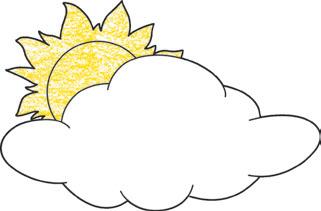
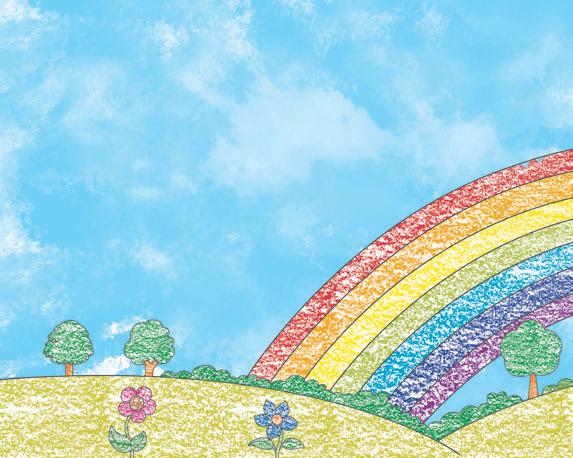





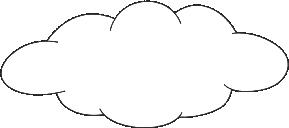
3. The Colourful Sky: Give some cotton to the children. Guide them to paste the cotton inside the cloud to complete the picture.








Domain General Awareness
Learning Outcome Children will answer simple questions about food.
Suggested Method Call children one by one. Ask them to answer the following:
• What is your favourite food?
• What do you eat for breakfast, lunch and dinner?
• Name one healthy food. Clap for each child and ensure everyone gets a turn.
Support for Struggling Learners
Domain
Gather the learners and discuss food. Say: We need food to keep ourselves strong and healthy. Then share your favourite food. Finally, guide each learner to share what they like to eat. You can ask them guiding questions like: What do you eat in the morning? / What do you eat at night?
Foundational Literacy
Learning Outcome Children can identify the /o/ sound and recognise the letters Oo.
Resources Literacy Skillbook, page 36, Chalk; Letter flashcards of any 5 letters, including O
Suggested Method Keep the flashcards neatly on a table. Call children one by one. First, ask them to identify and pick letter O. Then, ask them to say at least 2 words that start with /o/ sound. Clap for each child and ensure everyone gets a turn.
Support for Struggling Learners
Domain
Gather the struggling learners together. Write O and o on the board and guide them to say: O says /o/ /o/ /o/. Then, show them pictures of objects starting with /o/ sound from page 36 of the Skillbook. Say, for example: /o/ /o/ octopus.
Finally, guide the children to trace the letters Oo in the air with their index fingers.
Foundational Numeracy
Learning Outcome Children will count and identify the symbol of number 8.
Resources Some objects for counting; number flashcards
Suggested Method Lay the number flashcards neatly on the table. Call children one by one and ask them to identify number 8. Then, ask them to count and pick 8 objects. Clap for each child and ensure everyone gets a turn.

Support for Struggling Learners
Gather the learners and guide them to count 8 fingers. Repeat 3–4 times. Then write number 8 on the board and say: This is number 8. Then call children one by one and guide them to count and pick 8 objects.



































Circle Time Yes or No
General Awareness Food We Eat
General Awareness, page 53
Foundational Literacy Once More Literacy Workbook, page 25
Foundational Numeracy Meet Number 9 Numeracy Skillbook, page 46
DIY Story: Bittoo’s Balloons Rhymes and Stories, pages 28–32
LO: Children will share their responses in ‘Yes’ or ‘No’ using signal cards.
Resources: A red card; a green card
1. Warm-Up: Show the red card and the green card to the children. Explain that each child will get a question and they have to respond using the coloured cards. Say: If your answer is ‘Yes’, choose the green card and if your answer is ‘No’ choose the red card.
2. Responding to the Questions: Keep the red and green cards on the table. Call children one by one and ask them a question. If their answer is ‘yes’, ask them to hold up the green card and if it is ‘no’, ask them to hold the red card. You can ask simple questions like:
• Do you like apples?
• Do you like pets?
• Do you like to go to the park?
• Do you like to eat chocolates?
• Do you like carrots?
Encourage children to share their responses and explain that everyone can have different choices.
You can explain the activity and ask the questions in home language or mixed language, if required.


LO: Children will identify healthy and unhealthy food.
Resources: General Awareness, page 53; some healthy “food items” (vegetables, fruits, nuts); some junk food items (chips, chocolates, biscuits etc); two baskets
Introduction
1. Warm-Up Discussion: Show some food items one by one and ask: Do you like eating this? Let children respond freely. Then say: Some foods help us grow strong and healthy. Some foods are tasty but not good if we eat them all the time.

2. Rhyme Time: Recite the rhyme Yummy Food with actions and expressions and ask children to follow. Repeat 3–4 times.
Yummy Food
Fruits and veggies, yum yum yum, Make me strong so I can run! Too many sweets, oh no no, Just a little, not too much though!
3. Sorting Game: Place two baskets in front of the class—label one as Healthy and the other as Junk. Call children one by one. Hand them a food item and ask: Is this healthy or unhealthy? Help them place it in the right basket. Support with simple prompts like: Apples are good for us, let’s put them in the healthy basket!
If real food items are not available, you can call out the names of food items and help children identify healthy and junk food.
4. Food We Eat: Ask children to open page 53 of the General Awareness book. First, point to each food item and say their names aloud. Ask children to repeat the names after you. Then, guide them to circle the things that are healthy.























LO: Children will recap letters M, N, and O and identify objects starting with /m/, /n/ and /o/ sounds. Resources: Literacy Workbook, page 25; L, M, N, O letter flashcards (from Skillbook); sticker sheet (from Workbook)
1. Identifying Letters: Hand the letter flashcards to the children. Call out letters L, M, N and O in a random order and ask children to hold up the correct flashcard showing the letters.
2. Matching Letters and Sounds: Give the letter flashcards to the learners. Call out names of objects starting with /l/, /m/, /n/ and /o/ sounds in a random order. Say: Listen to the words correctly and hold up the correct letter flashcard that matches the beginning sound.










3. Once More: Ask children to open page 26 of the Workbook. First, ask them to look at the pictures and circle the correct letters. Then, help children to identify the pictures and paste the correct letter sticker below each picture. Find objects with /l/, /m/, /n/ and /o/ sounds at home and share their names in class the next day.

LO: Children will identify and count nine objects.
Resources: Numeracy Skillbook, page 46; some countable objects (pencils, toys, etc.)
1. Counting up to 9: Write 9 on the board and say: This is number 9. Count up to 9 by touching each object one by one. Say: Let’s count together! and encourage children to join in. Repeat with different objects for reinforcement.
2. Jump and Count: Draw 9 circles on the floor. Call children one by one and ask them to jump on each circle and count them. Ensure everyone gets a turn.
3. Meet Number 9: Ask children to open page 46 of the Skillbook. Show the 9 chicks and read the rhyme aloud. Have children count the chicks and say 9! together. Then, show 9 fingers and say: 9 fingers! Ask children to do the same. Assist as needed.
LO: Children will discuss the pictures from the story Bitto’s Balloon
Resources: Rhymes and Stories, pages 28–32; a water balloon; an air balloon










1. Fun with Balloons: Show the water balloon and the air balloon to children. Call children one by one and let them hold the balloons. Then demonstrate and say: Water balloons are heavy and cannot fly in the air. Air balloons are light and can fly high up.
2. Picture Talk: Ask children to open pages 28–32 of the Rhymes and Stories book. Show the pictures one by one and discuss them. Ask questions like:
• What is the boy doing?
• What happened to the balloon?
• What did mother give the boy? Encourage the children to participate and give responses.
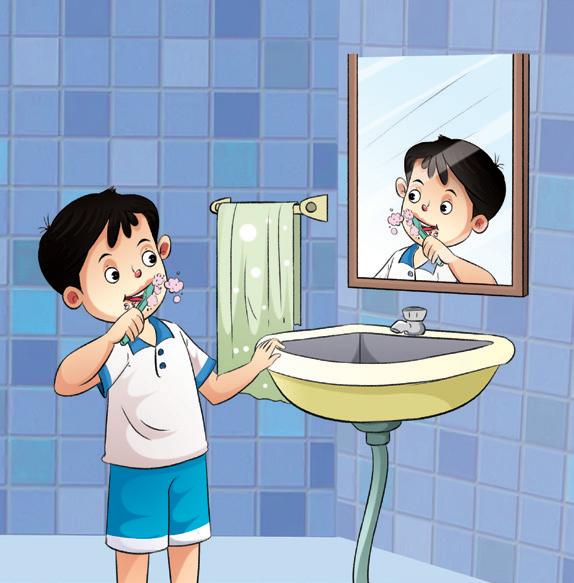


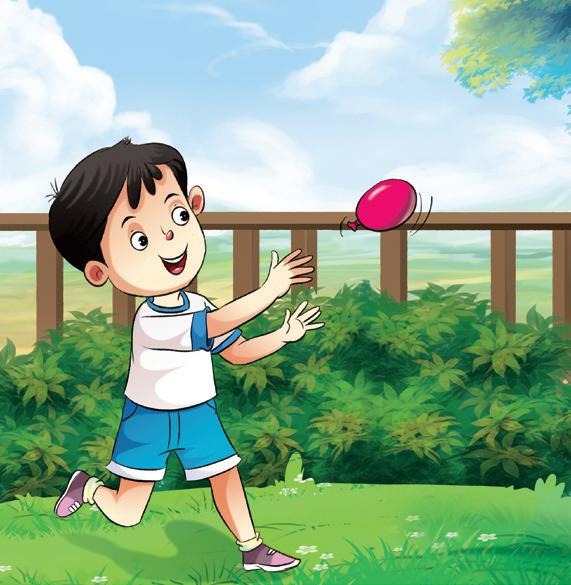

Circle Time Echo Moves
General Awareness Story: Sleepy Rohan
Foundational Literacy Discussion on Park
Foundational Numeracy Meet Number 9
DIY Story: Bittoo’s Balloon
General Awareness, page 54
Numeracy Skillbook, pages 46–47
Rhymes and Stories, pages 28–32
LO: Children will respond to sound and improve listening and gross motor skills.
Resources: Objects to make soft sounds (key chains, dropping pins, tapping on a box, etc.); objects to make loud sounds (banging on a desk, clapping loudly, ringing a bell, etc.)
1. Warm-Up: Ask children to stand in a big circle. Say: Today we will listen very carefully and move our bodies when we hear different sounds! Practise making a soft sound (e.g., light tapping) and a loud sound (e.g., clap) so children know the difference.
2. Game Time: Tell the children: If you hear a soft sound, turn around slowly. If you hear a loud sound, jump forward and jump back! Start playing the sounds one at a time and watch them respond. Repeat a few times with changes in speed and sound patterns.
3. Wrap-Up: After a few rounds, gather them and ask: Which sound was soft? What sound was loud? Keep it short and cheerful.
You can also ask a few children to make some soft sounds and loud sounds using common classroom items.

LO: Children will listen to and discuss the story of Sleepy Rohan.
Resources: General Awareness, page 54
1. Warm-Up: Begin by asking: What do you do before going to bed? Welcome all responses and let children share their answers freely.
2. Picture Discussion: Ask children to open page 54 of the General Awareness book. Point to each picture and discuss them. Ask them questions like: Where is the boy? / What is the boy doing? Who do you see in the picture?
3. Interactive Read Aloud: Read aloud the story of Sleepy Rohan with voice modulations and expressions. Pause in between to discuss the story by showing relevant pictures and asking questions like:
• What was Rohan doing late at night?
• Did Rohan want to wake up early?
• What was Rohan doing in school?
• Who woke up Rohan?



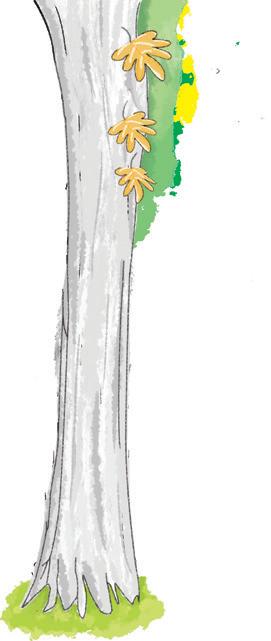
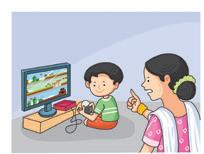


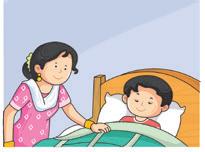

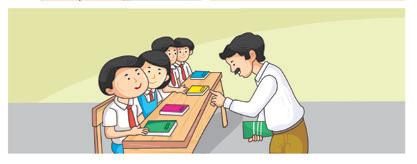
At the end emphasise that: We should go to bed early and wake up early in the morning. Sleep is important and helps us stay fresh.





LO: Children will talk about what they see in a park. Resources: A soft toy or a ball
1. Warm-Up Discussion: Begin by asking: Have you ever been to a park? Encourage children to raise their hands and share short answers. Ask guiding questions like: What do you see in the park? / Do you go on the slide or swing? / Who do you go with? Support with prompts if needed (e.g., Do you see trees in the park? / Do you hear birds?).
2. Sharing Time: Say: Now let us take turns to tell one thing we like about going to the park. Pass a soft toy or a ball around the circle—only the child holding it speaks. Encourage responses like: I like the swing, / I play with my brother. Model simple sentences and praise all efforts.
3. Fun with Movements: End the session by pretending to be in the park through fun actions. Say: Let’s pretend we are in the park! Give instructions like:
• Hold your arms out and swing side to side—we are on the swing!
• Now go up and down like you are sitting on a see saw.
• Let’s run on the spot—we’re running in the park!
• Flap your arms like wings—we’re birds flying in the sky!
Do each action together and keep the pace gentle and fun.

LO: Children will count 9 objects and identify and trace the symbol 9.
Resources: Numeracy Skillbook, pages 46–47; some countable objects (pencils, crayons, books, etc.); number flashcards (from Skillbook)
1. Recap: Recite the rhyme from page 46 of the Skillbook and ask the children to repeat after you. Ask children to count and show 9 fingers. Hand out the number flashcards to the children. Then, ask them to count and hold up the flashcard showing 9 chicks. Monitor and guide as required.
2. Symbol 9: Write 9 on the board and say: This is number 9. Call a few children to trace 9 on the board with their index fingers. Then, guide the children to trace number 9 in the air with their index fingers.
3. Tracing Number 9: Write number 9 on the floor. Call children one by one and guide them to trace 9 on the floor with their index fingers.






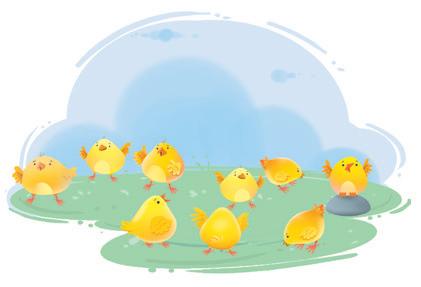






















4. Meet Number 9: Ask the children to open page 46 of the Skillbook and trace number 9, first with their fingers and then with crayons. Then, help them count the 9 erasers on page 47. Finally, guide them to count and circle the 9 water bottles. Trace the number 9 with your finger in flour on a plate. Do it with an adult!
LO: Children will listen to and discuss the story Bittoo’s Balloon. Resources: Rhymes and Stories, pages 28–32; a balloon filled with air






1. Warm-Up: Gather the children in a circle, if possible. Ask them to pass the balloon around in a circle without dropping it. Repeat 2–3 rounds.
2. Interactive Read–Aloud: Read aloud the story Bittoo’s Balloon with expressions and voice modulation. Pause in between to show pictures and ask relevant questions like:
• What did Bittoo do after waking up?
• What happens to the water balloon?
• What did mummy give Bittoo? Encourage each child to participate and give responses.




Circle Time Balance Walk
General Awareness
Foundational Literacy
Good Habits
General Awareness, page 55
Picture Talk: Let’s Talk! Fun Day at Park Literacy Skillbook, pages 38–39
Foundational Numeracy Number 9
DIY Making Smileys
Numeracy Workbook, page 28
LO: Children will engage in a fun activity to improve balance and co-ordination.
Resources: A chalk or a coloured tape
1. Setting the Context: Draw a straight line with chalk or make a straight line using a tape, and keep a soft toy at the end of the line. Say: Today we will walk on this straight line. We will walk on our toes, collect the toy and walk back on our heels. Demonstrate once to show the children.
2. Balance Walk: Call one child at a time to walk along the line. Encourage them to stretch their arms out to the sides to help them balance. Ask each child to pick up the soft toy and walk back on the line without stepping off. Cheer and clap for each child to keep it playful and encouraging!
You can make it challenging by asking children to hop along the line.

LO: Children will identify and demonstrate some good habits to follow daily.
Resources: General Awareness, page 55
1. Warm-Up Discussion: Gather the children and begin with a friendly chat. Say: Today we are going to talk about things we do every day to keep ourselves happy and healthy! Ask: What do you do when you wake up in the morning? Let them share their thoughts freely.
2. Demonstrate Good Habits: Model 3–4 habits using real actions or objects. Say: Time to learn some good habits together!
• Pretend to brush your teeth—We brush our teeth to keep them clean.
• Rub hands and pretend to wash—We wash our hands before eating.

• Pretend to use a towel to dry hands—We dry our hands after washing.
• Pretend to throw paper in a dustbin—We keep our place clean. Encourage children to copy each action. Assist those who need help.
3. Good Habits: Ask children to open page 55 of the General Awareness book. Guide them to look at the pictures and identify the good habits. Say, for example: The girl is washing the apple before eating it. Then read the line under each picture and ask the children to repeat after you.







LO: Children will discuss the pictures from the chapter Let’s Talk! Fun Day at Park.
Resources: Literacy Skillbook, pages 38–39

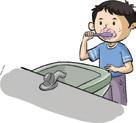
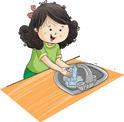



1. At the Park: Begin the session with a fun activity. Say: I will name a few things, show me a thumbs up if you see them in the park and a thumbs down if you do not. Name some things in a mixed order and let children respond with actions. For example, say: Swings, bus, lion, see-saw, slide, clothes shop, trees, bed and so on.
2. Picture Talk: Ask children to open pages 38–39 of the Skillbook. Guide them to look at the pictures and invite each child to share one thing they see. Encourage children to respond in their home language, if required.
3. A Fun Day at Park: Discuss the different things shown in the picture using the home language. Point to the pictures as you talk about them. For example, say (in the home language): We see a park. Many children are playing in the park. Encourage children to name the items shown in the picture along with you.
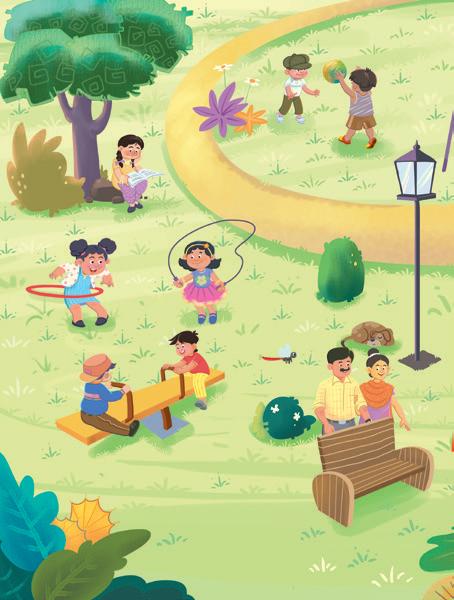
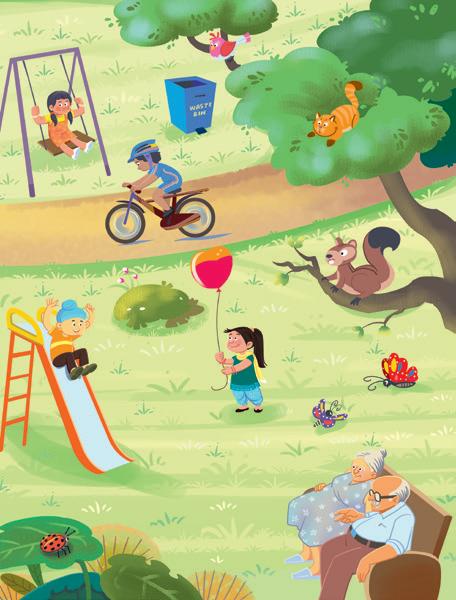

Go to a nearby park with an adult. Look at what you see and what people are doing there.
LO: Children will identify the symbol 9 and count 9 objects.
Resources: Numeracy Workbook, page 28; some countable objects; a basket; number flashcards (from Skillbook)
1. Identifying Symbol 9: Hand out the number flashcards to the children. Then, ask them to identify symbol 9 and hold up the correct flashcard. Monitor and guide as required.
2. Counting 9: Call children one by one. Ask them to count and pick 9 objects and put them in the basket. Ensure everyone gets a turn.
3. Number 9: Ask children to open page 28 of the Workbook. First, guide them to count the 9 books. Then, ask them to count and colour 9 beads.
LO: Children will make smiley faces to represent good and bad habits.










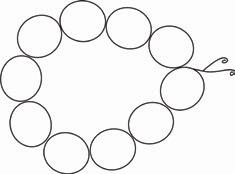


Resources: Yellow round paper cutouts (2 per child); ice-cream sticks (2 per child); black crayons; black bindis (2 per child); a sad and a happy smiley; glue
1. Warm-Up: Ask children to say some good habits. Guide them to say, for example: brushing teeth, washing hands, etc. Then, mention some habits that are not good like: Not brushing teeth, wasting food, etc.
2. Smiley Talk: Show the happy smiley and say: This happy smiley is for the times when we follow good habits. Then, show the sad smiley and say: This sad smiley is for the times when we do not follow good habits. Today we will make these smileys.
3. Making Smiley: Give the materials to the children. Demonstrate and guide them to paste the bindis to make the eyes and draw the mouth (showing a happy smile and sad frown) using crayons. Then, guide them to paste the smiley on the ice cream sticks with glue.
If bindis are not available draw the eyes using black marker or crayon. Collect and keep the smileys properly to use in an activity the next day.

Domain
Circle Time Up in the Sky
General Awareness Enacting Good Habits
Foundational Literacy Let’s Talk! A Fun Day at Park Literacy Skillbook, pages 38–39
Foundational Numeracy Number 9
DIY Making Good Habits Poster
LO: Children will play a fun and interactive game to identify objects they can see when they look up at the sky.
1. Warm-Up: Begin by asking the children: Can you name some things we see when we look up at the sky? Allow children to respond freely. After a few responses, say: Now we’re going to play a fun game to find out what belongs in the sky!
2. Game Time: Gather the children in a circle. Explain the rules: I will say the name of an object. If you think the object is something we see up in the sky, point up! If it’s not, cross your arms in front of you like an X. Call out different objects in a mixed order. Examples: Airplane, apple, bird, sun, tree, moon, balloon, fish, stars.

LO: Children will identify good habits and enact some daily good habits. Resources: Smileys made in the DIY class on the previous day
Introduction
1. Identifying Habits: Distribute the happy and sad smileys to the children. Call out some habits and guide children to show the happy smiley if it is a good habit and a sad smiley if it is not a good habit. Say aloud habits like:
• Washing hands before eating.
• Wasting food.
• Not washing a fruit before eating.
• Throwing things in a dustbin.
• Not cleaning after playing. Monitor and guide children as required.
2. Enacting Good Habits: Call children one by one. Say a good habit and ask children to act it out. For example:
• Show me how you brush your teeth!
• Show me how you throw waste in the bin! Make it fun and lively. Clap for each child.







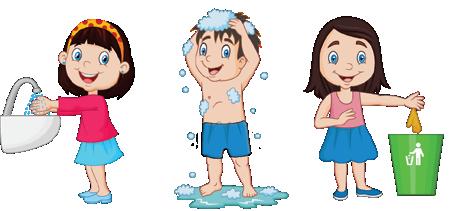
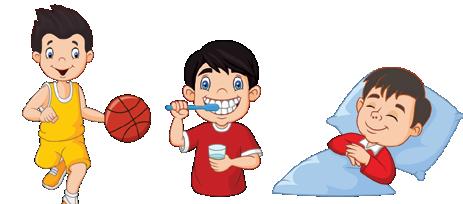
LO: Children will describe the picture of the park using simple sentences or phrases.
Resources: Literacy Skillbook, pages 38–39
1. Sharing Time: Invite a few children to talk about a park. Guide them to name different things they see in a park and different activities done by people in the park. Ask questions like: What do you like to do in the park? / Who goes to the park with you?
2. Picture Talk: Ask children to open pages 38–39 of the Skillbook. First, point to each thing in the picture and name them. Ask children to point to the pictures and repeat the names after you. For example, point and say: bench, swing, dog and so on. Then, describe the picture using simple sentences like: The girl is holding a balloon. / The dog is sleeping. Explain in home language as well.
3. Knowing from Children: Call children one by one. Guide them to share one point from the picture in simple sentences. For example: I see a _____ / The girl is _____________. / The cat is ____________ and so on. Encourage children to point to the picture as they describe. Ensure everyone gets a turn. If children struggle to share, ask them guiding questions like:



Who is playing with a hula hoop? / Where is the squirrel? If children struggle to share in English, encourage them to share in their home language.

LO: Children will revise counting number 9 through a hands-on activity.
Resources: Small pebbles or some pencils; 10 bowls
1. Recap: Write number 9 on the board and say: This is number 9. Then guide children to trace 9 in the air with their index fingers.
2. Counting 9 Fingers: Invite a few children to come forward and count and show 9 fingers. Ask the others to follow and repeat after them.





3. Fun with Counting: Draw 10 circles on the floor with chalk, or place 10 bowls. Give the pebbles to children and ask them to count and put 9 pebbles in 9 circles or bowls. Guide them if required and ensure they put one pebble in one bowl or circle.

Draw any 9 objects or shapes in your notebook and bring it to the class the next day.
LO: Children will recall the good habits and develop their fine motor skills by making a poster. Resources: Chart paper; child-safe paint (for handprints); stickers (stars, smileys); glue; cutouts of toothbrush, soap, food, etc. (optional); marker
1. Warm-Up: Gather children and talk about good habits in simple words. Say: Brushing teeth, washing hands, eating healthy food—these are all good habits!
2. Poster Making: Spread the chart paper on a table or floor. Call children one by one. Let each child dip their hand in paint and make a handprint on the poster. As they do, the teacher says aloud a good habit and writes it next to the handprint. Example: I wash my hands before eating.
3. Decorating Time: Give the children stickers to decorate the poster. They can place them anywhere around the handprints. You can also add pre-made cutouts or small drawings with labels if needed.







Domain General Awareness
Learning Outcome Children will talk about good habits.
Resources General Awareness, page 55; a pretend microphone
Suggested Method Call children one by one and give them a pretend microphone. Ask them to talk about any one good habit that they would like to follow. Clap for each child and ensure everyone gets a turn.
Support for Struggling Learners
Domain
Gather the learners and refer to page 55 of the General Awareness book. Show each picture one at a time and discuss the good habits shown in the picture. For example: Always wash the fruits before eating them. Then read aloud the lines slowly but loudly and ask children to repeat after you.
Foundational Literacy
Learning Outcome Children will look at a picture of a park and share what they see.
Resources Literacy Skillbook, pages 38–39
Suggested Method Call children one by one. Show pages 38–39 from the Skillbook and ask children to share one thing that they see in a simple sentence. If they struggle, guide them by asking questions like: Who is sitting on the swing? / What is the dog doing? Clap for each child and give them a smiley. Ensure everyone gets a turn.
Support for Struggling Learners
Gather the struggling learners together. Show them pages 38 and 39 from the Skillbook and say: This is a park. Then point to the objects in the picture and name them one by one. Ask children to repeat them after you.
Domain Foundational Numeracy
Learning Outcome Children will count up to 9 and identify the symbol of number 9.
Resources Some objects for counting; number flashcards (from Skillbook)
Suggested Method Lay the number flashcards neatly on the table. Call children one by one and ask them to identify number 9. Then, ask them to count and pick 9 objects. Clap for each child and ensure everyone gets a turn.

Support for Struggling Learners
Gather the learners and guide them to count 9 fingers. Repeat 3–4 times. Then write number 9 on the board and say: This is number 9. Then call children one by one and guide them to count and pick 9 objects.




































Circle Time
Action Rhyme: See Saw Up and Down
General Awareness Being Polite
General Awareness, page 56
Foundational Literacy Letter Pp Literacy Skillbook, page 40
Foundational Numeracy Meet Number 10
DIY Rhyme: Two Little Birds
LO: Children will recite a simple rhyme with actions and movements.
1. Warm-Up Discussion: Begin by asking: Have you ever sat on a see-saw at the park? What happens when you go up and down? Let children share their experiences briefly. Demonstrate with your hands: This is up, (raise hands) and this is down. (lower hands).
Numeracy Skillbook, page 48
Rhymes and Stories, page 33
See Saw Up and Down See saw, up and down, This is how we go to town! Up goes me, down goes you, Then we switch and start a new!
2. Rhyme Time: Recite the rhyme See Saw Up and Down with actions and movements. Encourage children to gently sway side to side, or move their hands up and down as you sing. If space allows, pair them up and let them hold hands and rock like a see-saw.
3. Movement Fun: Now turn it into a game! Say: When I say “up,” you stand tall. When I say “down,” you sit or crouch low! Call out “up” and “down” in a fun, rhythmic way to keep them engaged.

LO: Children will learn words of politeness, such as hello, good morning, thank you, sorry, excuse me, and please.
Resources: General Awareness, page 56
1. Rhyme Time: Recite the rhyme Hello Hello with actions and expressions and ask children to repeat after you. Repeat 2–3 times for reinforcement.
2. Polite Words and Gestures: Gather children in a circle. Say: Today we will learn some magic words that make people happy!
Hold up your hand and say each word slowly, using big gestures:
• Hello! (wave your hand)
• Good morning! (stretch arms like waking up)
• Thank you! (place hand on chest with a smile)
• Sorry! (make a sad face and nod your head)
• Excuse me! (raise your hand gently)
• Please! (requesting nicely and gently)
Hello Hello
Hello, hello, I smile and say, Good morning, friends, let’s start our day! Thank you when you help me play, Sorry if I spoil your day.
Excuse me when I want to talk, Please helps me when I need to ask!
Ask children to repeat after you with actions. Make it playful and fun—use your voice and expressions to keep them engaged!
3. Being Polite: Ask children to open page 56 of the General Awareness book. First, discuss the pictures with them. Ask questions like: What do you see in the picture? / What do you think the girl / boy is doing? Then read aloud the text from the page, while showing the pictures as you read. Explain in home language or mixed language, if required.







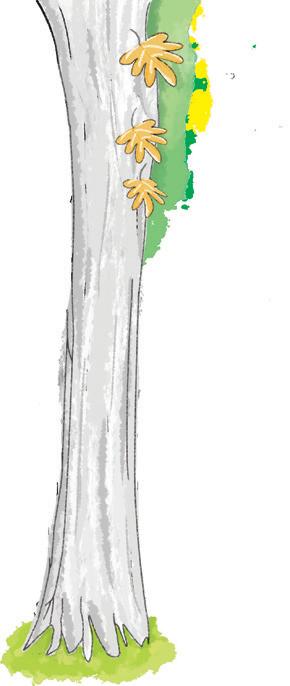
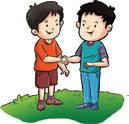

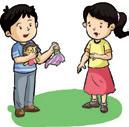

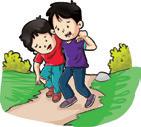

LO: Children will identify the objects starting with the /p/ sound of letters Pp. Resources: Literacy Skillbook, page 40; some objects starting with /p/ sound (pencil, pen, purse, pin etc.)
1. Warm-Up: Show objects starting with /p/ sound to the children and say its name clearly. Draw their attention to the beginning sound of the words. Say: /p/ /p/ pen. Ask children to repeat after you.
2. Looking at Pictures: Turn to page 40 of the Skillbook and point to each picture one by one. Say the names aloud emphasising on the beginning sound /p/. Encourage children to say the words clearly, focusing on the /p/ sound. Example: /p/ /p/ pineapple.
3. Reinforcing /p/ Sound: Read the text given on page 40 several times, highlighting the /p/ sound. Encourage children to listen carefully and repeat after you.




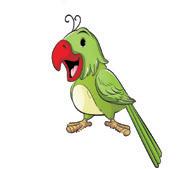
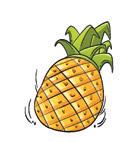
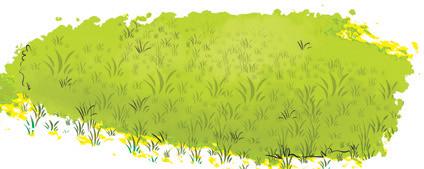


Identify some objects that start with /p/ sound at home.

LO: Children will count up to 10 objects.
Resources: Numeracy Skillbook, page 48; countable objects (pencils, chalk, books, pens, etc.); 10 small balls; a box or a basket
1. Counting 10 Objects: Write 10 on the board and say: This is number 10. Then, count up to 10 by touching each object one by one. Say: Let’s count together! Encourage children to join in as you count aloud: “1, 2, 3...” and so on, up to 10.
Repeat the activity using different sets of objects (e.g., blocks, crayons, buttons) to reinforce the concept of counting to 10.
2. Fun with Counting: Call children one by one and ask them to count and put 10 balls in the basket one by one. Guide the children if they struggle to count.
In case 10 balls are not available, you can conduct the activity using toys or other classroom objects.
3. Meet Number 10: Ask children to open page 48 of the Skillbook. Point to the 10 parrots and say: Let’s count the parrots together! Then, read the rhyme aloud with expression. Then, count and show 10 fingers and say: 10 fingers! Ask children to do the same. Assist as needed.
LO: Children will recite the rhyme Two Little Birds with actions and movements.
Resources: Rhymes and Stories, page 33
1. Discussing the Picture: Ask children to open page 33 of Rhymes and Stories book and look at the picture. Ask questions like: What do you see in the picture? / How many birds are there? / What are the birds doing?
2. Rhyme Time: Recite the rhyme Two Little Birds with actions and movements. Ask the children to follow and sing along. Repeat 4–5 times to help children remember the rhyme.






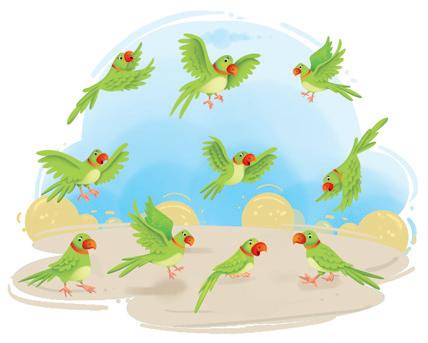





Domain
Circle Time
Discussing Responsibilities at School
General Awareness Safety at School
Foundational Literacy Letter Pp
Foundational Numeracy Meet Number 10
DIY Rhyme: Two Little Birds
Book & Page
General Awareness, page 57
Literacy Skillbook, page 40
Numeracy Skillbook, pages 48–49
Rhymes and Stories, page 33
LO: Children will discuss and identify simple responsibilities in school, like taking care of belongings, helping tidy up, and being gentle with books and toys.
Resources: school bag; bottle; toys
1. Warm-Up Discussion: Start by showing a school bag, a book, or a toy. Ask: Who helps pack your bag? Who brings your bottle and lunch? What do we do when we finish playing? Let children share their answers freely. Respond warmly and reinforce: Yes! That is being responsible!
2. Story Time: Narrate the story Rani in School with expressions and voice modulation. Emphasise how Rani is responsible with her belongings at school. Ask: Can we be like Rani? What can we do to help in school?
Let children share their responses.
Pro Tip
Let children share some responsibilities they follow at school.
3. Action Time: Ask children to act out simple responsible actions:
• Pretend to pack a bag.
• Pretend to place books on a shelf.
• Pretend to put toys back in a box.

LO: Children will identify and discuss ways to stay safe at school.
Resources: General Awareness, page 57; a soft toy
Rani in School Rani loves her school. Every day, she puts her toys back in the box, carries her bag carefully, and helps her teacher keep the class clean. Everyone says—Rani is a responsible child!

1. Warm-Up Discussion: Begin by saying: When I come to school, I also follow safety rules. Ask: What do you do to stay safe at school? Accept all answers and gently build on them. Use a soft toy or puppet to act out a short story:
Tina the Teddy goes to school. She walks slowly, does not push, and always listens to the teacher. One day, she saw some toys on the floor. She quickly told the teacher so that no one would trip and fall. Tina helps keep her classroom safe and happy!
Explain the story in home language, if required.
2. Action Practice: Tell children: Let’s act out how we stay safe!
• Walk, don’t run. (Everyone walks slowly in place)
• Pick up toys after play. (Pretend to clean up)
• Listen to your teacher. (Hand to ear)
• Don’t push or hit. (Shake head)
• Ask for help when needed. (Raise hand)
3. Safety at School: Ask children to open page 57 of the General Awareness book. First, discuss the pictures with the children, then guide them to identify actions that help keep us safe at school.







LO: Children will be able to recognise the sound and symbol of letters Pp. Resources: Literacy Skillbook, page 40
1. Recap: Point to the pictures on page 40 of the Skillbook and say their names aloud, emphasising the /p/ sounds at the beginning. Ask children to repeat after you.
2. Reinforcing /p/ Sound: Read the text given on page 40 aloud a few times, emphasizing the /p/ sound. Encourage children to repeat after you.
3. Blackboard Practice: Write letter P on the board. Point to letter P and ask children to repeat after you: P says /p/ /p/ /p/. Repeat 7–8 times.
4. Blackboard Show: Invite children to trace letter P on the board with their finger or a piece of chalk. Encourage them to say P says /p/ /p/ /p/

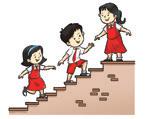
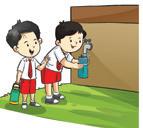



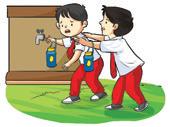

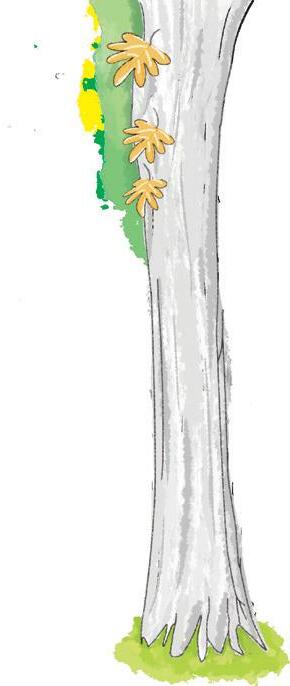










LO: Children will count 10 objects and identify and trace the symbol 10. Resources: Numeracy Skillbook, pages 48–49; paint; some countable objects (pencils, crayons, books, chalks, etc.); number flashcards, (from Skillbook)
1. Recap: Recite the rhyme from page 48 of the Skillbook and ask the children to repeat after you. Ask children to count and show 10 fingers. Give the number flashcards to the children. Then, ask them to count and hold up the flashcard showing 10 parrots. Monitor and guide as required.
2. Symbol 10: Write 10 on the board and say: This is number 10. Call a few children to trace 10 on the board with their index fingers. Then, guide the children trace number 10 in the air with their index fingers.
3. Tracing 10: Call children one by one and guide them to trace number 10 on the wall with their index fingers. Ensure everyone gets a turn.
4. Meet Number 10: Ask children to open page 49 of the Skillbook. First, guide them to count 10 circles. Then, help them dip their finger in paint and make thumbprints on the caterpillar. Ask them to count 10 as they make the thumbprints.










With the help of an adult, practice counting 10 vegetables at home.
LO: Children will recite the rhyme Two Little Birds with actions and movements. Resources: Rhymes and Stories, page 33
1. Rhyme Time: Recite the rhyme Two Little Birds with actions and expressions and ask children to sing along. Repeat 3–4 times.
2. Action Game: Ask: Who were there in the rhyme Two Little Birds? Let children share their answers and then say: Two birds and a squirrel. Explain that when you say ‘BIRD’ children should move their arms up and down like flapping wings. When you say ‘SQUIRREL’, children should hop. Make it fun by increasing the pace of the instruction.
Pro Tip









Ask children to share whether they have seen a squirrel. Encourage them to share how the squirrel looks, its colour etc. Children can share in home language.

Circle Time Simple Exercises
General Awareness Safety on the Road
General Awareness, page 58
Foundational Literacy Letter Pp Literacy Skillbook, page 41
Foundational Numeracy Number 10
DIY Safety Game
Numeracy Workbook, page 29
LO: Children will practise simple exercises to enhance physical development.
Resources: Soft music
1. Warm-Up Discussion: Start by saying: Let us wake our bodies. Can you show me how you stretch your arms? Can you touch your toes?
Encourage children to follow you as you gently stretch upwards, sideways, and down to the floor.
2. Movement Time: Guide the children to do the following one at a time:
• Clap their hands
• Stomp their feet
• March in place
• Turn around slowly
• Sit and stand up
• Roll their arms in big circles
Say each action clearly and demonstrate as they copy. You can say:
Let’s clap our hands! Now stomp your feet! Can you march like this?
3. Cool Down: Sit down in a circle and say: That was fun! Moving keeps us strong and happy. What did you enjoy the most? Let a few children share. Then guide them to take a deep breath and rest their hands in their laps.

LO: Children will identify basic actions to stay safe on the road through discussions and pretend play.
Resources: General Awareness, page 58; chairs
1. Warm-Up Discussion: Begin by asking: Have you seen roads with cars and buses? Let’s learn how to stay safe! Explain each safety rule using gestures and short examples:
• We never go out alone on the road. (Hold a child’s hand)
• We do not run on the road. (Show walking feet)
• We walk on the footpath. (Pretend to walk on the side)
• We never put our head and hands outside the bus or car window. (Sit and keep hands in the lap)
• We cross the road carefully—we stop, look both ways, and walk slowly. (Do each action in a sequence while walking in place.)
• We get on and off the school bus one by one.
2. Pretend Play–Riding a School Bus: Set up chairs in two rows to make a “school bus.” Call 3–4 children at a time. One child can pretend to drive with a toy steering wheel or a plate. Children take turns “getting into the bus” one at a time. Say: Let’s sit quietly. No standing, no pushing! Hands stay inside the bus! When they “reach school,” they get down one by one.
You can also make a footpath in the class using chalk or tape and guide children to walk on it to reach the bus.
3. Safety on the Road: Ask children to open page 58 of the General Awareness book. First, discuss the actions in each picture and then guide them to circle the actions that help us stay safe of the road.







LO: Children will identify the symbol P and trace letters Pp. Resources: Literacy Skillbook, pages 41; yellow paint

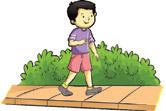
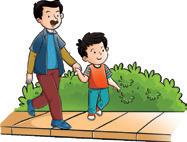


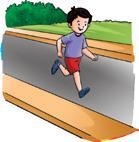
1. Recap: Ask children to name some words starting with /p/ sound. Guide them to emphasise on the /p/ sound as they say each word. For example: /p/ /p/ pencil.
2. Symbol Pp: Write capital P on the board and explain the steps for writing P. Refer to the arrows on page 41 for guidance. Say: P is a standing line with a right curve on top. Guide them to trace letter P in the air with their index fingers. Ask them to say: P says /p/ /p/ /p/. Repeat the same for small letter p.
3. Tracing Pp: Write capital letter P and small letter p on the board. Call the children one by one and guide them to trace the letters with their index fingers.

4. Letter Pp: Ask the children to open page 41 of the Skillbook and trace letter Pp first with their index fingers and then join the dots with a crayon to form letters P and p. Then guide them to say /p/ /p/ pineapple and dab yellow paint to make fingerprints on each dot of the pineapple.


Take some flour or sand in a plate and trace letter Pp with the help of an adult.
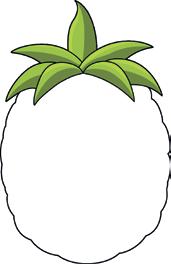

LO: Children will count 10 and identify the symbol 10.
Resources: Numeracy Workbook, page 29; a cloth bag; some common classroom objects (books, pencils, chalks, erasers, etc.); chalks
1. Symbol 10: Write 10 on the board. Call children one by one. First, ask them to trace 10 with their fingers and then trace with a chalk. Ensure everyone gets a turn.
2. A Bag of 10: Keep some classroom objects neatly on a table and say: We will go shopping today. We will put 10 things in our shopping bag. Call children one by one and give them a cloth bag. Guide them to count and put only 10 objects in the bag.
3. Number 10: Ask children to open page 29 of the Workbook. First, ask them to count aloud numbers from 1 to 10 and then guide them to join the numbers in sequence. Demonstrate and show on the board, if required. Then ask them to count and colour 10 beads.

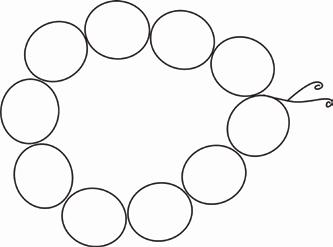

LO: Children will recognise safe and unsafe behaviours in familiar places—home, school, and on the road.
1. Warm-Up: Gather children in a circle and say: We are going to play a game! I will say something, and you have to tell me if it’s safe or not safe. If it’s safe—give a big thumbs up. If it’s not safe—cross your arms like X. Demonstrate the two actions.
2. Game Time: Call out safe and unsafe actions one at a time, in a fun voice. Encourage children to respond with the correct gesture. You can say actions like: Touching a hot gas stove. / Walking on the footpath. Running in the classroom and so on.
Domain
Circle Time
Thank You Circle
General Awareness Safety at Home
Book & Page
General Awareness, page 59
Foundational Literacy Letter Pp Literacy Workbook, page 26
Foundational Numeracy Number 10
DIY The Birthday Gift
Art and Craft, page 20
LO: Children will share gratitude and appreciation for small things and people around them.
Resources: A soft toy or a ball
1. Warm-Up: Begin by sitting in a circle, if possible. Say: Today we are going to have a Thank You Circle. That means we will think about something or someone we are thankful for! Give a simple example: I am thankful for the sunshine today. / I am thankful for our snack time.
2. Sharing Time: Pass a soft toy or a ball around the circle. When each child holds it, they say: Thank you for… (Children can say anything— like food, a friend, mummy, toys, etc.)
If a child is shy, allow them to listen or repeat after you gently.
3. Wrap-Up: End by saying: Saying thank you helps us feel happy inside! You all did a great job sharing today. Do a simple clapping cheer for the group!

LO: Children will identify different ways of staying safe at home.
Resources: General Awareness, page 59
1. Rhyme Time: Recite the rhyme Safe at Home with actions and expressions. Encourage children to recite along. Repeat 3–4 times for reinforcement.
At home I play, I read, I rest, I don’t touch plugs—that’s not the best! I don’t touch knives or scissors—no! I stay away from the gas stove. I stay away from pots so hot, I call my grown-up—they help a lot!

After the rhyme explain the unsafe actions in home language.
2. Safe or Not Safe: Begin with a circle time chat:
Say: Our homes are happy places, but we must stay safe! Let’s talk about what we should not touch or do at home.
Ask simple questions to children and discuss them:
• Should we touch hot pots on the stove? (No!)
• Should we play with scissors or plugs? (No!)
• Can we eat tablets or medicine by ourselves? (No!)
Encourage children to say “Not safe!” and shake their heads or cross their arms if it’s dangerous, and “Safe!” with a thumbs up if it’s okay.
3. Safety at Home: Ask children to open page 59 of the General Awareness book. Discuss each picture one by one and guide children to mark or cross the unsafe actions.







LO: Children will identify objects starting with the /p/ sound and the letters Pp.




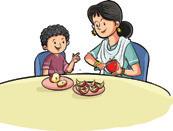




Resources: Literacy Workbook, page 26; objects starting with /p/ sound and other sounds
1. Identifying Objects with /p/ Sound: Keep the objects on the table. Call children one by one and ask them to identify an object starting with the /p/ sound and say its name aloud.
2. Identifying Letter Pp: Write some letters, including letters P and p, on the board in a random order. Call children one by one and ask them to identify letter Pp. Ensure everyone gets a turn.
3. Letter Pp: Ask children to open page 26 of the Workbook. Guide them to match the letter with objects starting with /p/ sound and identify the letter Pp.











LO: Children will practise counting 10 through a fun activity.
Resources: Number flashcards (1 to 10) from Skillbook
1. Recap: Give the number flashcards to the children. Ask them to identify and hold up the flashcard showing the symbol 10. Then, guide them to count and show 10 fingers,
2. Setting the Context: Begin by saying: Today, we are going to use our feet to count! Let’s see how many steps we can take together. Show them how to take one slow step and say “one,” then take another and say “two.” Let them try with you.
3. Step and Count Together: Call children one by one. Now say: Let’s walk and count to 10 together! Start walking slowly and count aloud—“1, 2, 3…”—till 10. Encourage children to count with you as they take steps.
If possible, conduct this activity in an open space.
Take some paint, dip your palms and make your handprints on paper. Then, count your 10 fingers.
LO: Children will colour ribbons on gift boxes to decorate them.
Resources: Art and Craft, page 20; an empty box wrapped with a gift paper; crayons
1. Warm-Up Talk: Start by asking: Have you ever received a gift on your birthday?
Let children share their answers in home or mixed language. Then, say: Gifts make us happy—and it feels even better when we give gifts to our friends! Show a wrapped empty box or draw a gift on the board to build excitement.
2. Birthday Gifts: Ask children to open page 20 of the Art and Craft book. Guide them to colour the ribbons to complete the gifts.





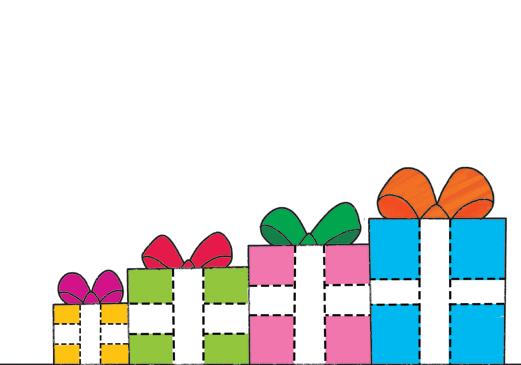









Domain General Awareness
Learning Outcome Children will talk about some safety practices they follow at school, home and on the road.
Suggested Method Call children one by one. Ask them to share some safety practices they should follow at home, school and on road. Clap for each child and give them a smiley. Ensure everyone gets a turn.
Support for Struggling Learners
Explain different safe actions to children using actions. Show the actions and ask children to follow you. For example, say: We should not run in the classroom. (do the action of walking slowly on spot).
Domain Foundational Literacy
Learning Outcome Children can identify the /p/ sound and recognise letters Pp.
Resources Objects starting with /p/ sound and other sounds; flashcards of any 5 letters, including P—(from Skillbook)
Suggested Method Keep the flashcards neatly on a table. Call children one by one. First, ask them to identify and pick letter P. Then, ask them to identify and pick any two things that start with /p/ sound. Clap for each child and ensure everyone gets a turn.
Support for Struggling Learners
Gather the struggling learners together. Write P and p on the board and guide them to say: P says /p/ /p//p/. Then, show them some objects starting with /p/ sound, and say for example: /p/ /p/ pen. Finally, guide the children to trace letters Pp in the air with their index fingers.
Domain Foundational Numeracy
Learning Outcome Children will count and identify the symbol of number 10.
Resources Some objects for counting; number flashcards—(from Skillbook)
Suggested Method Lay the number flashcards neatly on the table. Call children one by one and ask them to identify number 10. Then, ask them to count and pick 10 objects. Clap for each child and ensure everyone gets a turn.
Support for Struggling Learners
Gather the learners and guide them to count 10 fingers. Repeat 3–4 times. Then write number 10 on the board and say: This is number 10. Then, make 10 circles on the floor. Call children one by one and guide them to count and jump on each circle.

















Domain
Circle Time
General Awareness
Topic of the Day
Imitating the Sound
Exploring Water
Foundational Literacy Letter Qq
Foundational Numeracy Rhyme: Number Poem
DIY Rhyme: A Plant
Book & Page
Literacy Skillbook, page 42
Numeracy Skillbook, page 50
Rhymes and Stories, page 34
LO: Children will develop their listening skills by imitating the different sounds.
1. Warm-Up: Gather children in a circle and say: We are going to play a fun sound game. Listen carefully and copy the sound I make! Make sounds like: Moo! (cow) or Beep beep! (car). Ask children to imitate you.
2. Game Time: Start the game by whispering a sound to the child next to you. They pass it on by repeating the same sound to the next child, and so on. Use fun and familiar sounds like:
• Bark! • Clap!
• Whoosh! (wind) • Meow!
• Splash!
Celebrate everyone after the round: That was so fun—you all listened so well!

LO: Children will explore the concept of water through sensory play and a fun game.
Resources: a cup or bowl of water; a bucket of water; objects like cups, spoon, sponge; a bottle or jug filled with water
1. Warm-Up Talk: Gather the children in a circle. Show a cup or bowl of clean water. Say: This is water! We drink it, use it to wash, and plants need it too! Let children share where they see or use water at home (bathroom, kitchen, etc.).

Practice
2. Sensory Exploration: Set up a large tray or basin with some water. Call a few children at a time to come and dip their hands. Give them small, safe items to play with—like cups, spoons, plastic animals, or sponges. Let them pour, squeeze, and splash gently.
3. Water Movement Fun: Show how water moves! Tilt a small jug to pour water slowly and then quickly into another bowl. Ask them to hear the sound of the pouring water. Say: Look how water moves—smooth and splashy! Let children take turns doing the same with your help.




Place a mat or cloth under the area to avoid slipping. Use just a little water for easy clean-up.





LO: Children will identify objects starting with the /kw/ sound of letters Qq.
Resources: Literacy Skillbook, page 42; a quill
1. Warm-Up: Show the quill to the children, emphasising on the /kw/ sound and say its name clearly. Draw their attention to the beginning sound of the words. Say: /kw/ /kw/ quill. Ask children to repeat after you.

2. Identifying Pictures with Letters Qq: Turn to page 42 of the Skillbook and point to each picture one by one. Say the names aloud emphasising on the beginning sound /kw/. Encourage children to say the words clearly, focusing on the /kw/ sound. Example: /kw/ /kw/ queen.
3. Reinforcing the /kw/ Sound: Read the text given on page 42 several times, highlighting the /kw/ sound. Encourage children to listen carefully and repeat after you.
LO: Children will count numbers from 1 to 10 and recite the Number Poem
Resources: Numeracy Skillbook, page 50

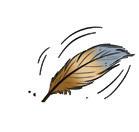

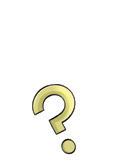

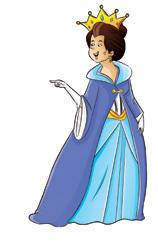

1. Counting 1 to 10: Count from 1 to 10 with the help of fingers and ask children to follow. Practise counting 2–3 times for reinforcement. Then, ask children to count and show their fingers, for example say: show me 5 fingers / show me 8 fingers and so on.
2. Action Count: Do simple movements together like:
• Clap 10 times
• Jump 5 times
• Stomp 8 times
Say the number each time as you do the action.
3. Number Poem: Recite the rhyme from page 50 of the Skillbook with actions and voice modulations. Ask children to repeat after you. Repeat 3–4 times for reinforcement.

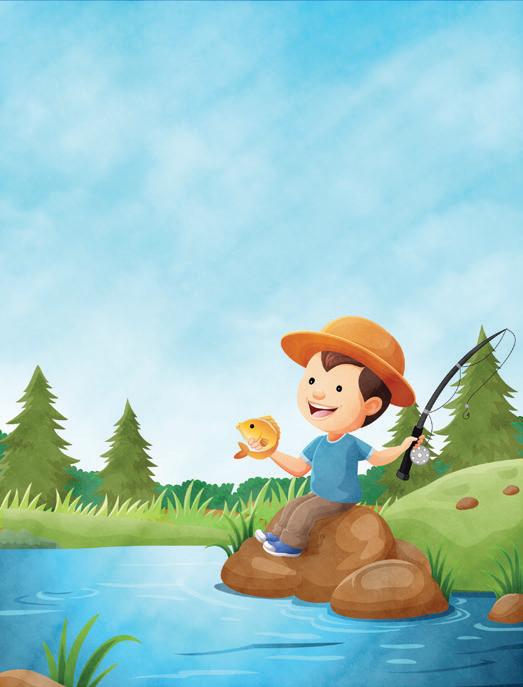

You can also practise counting 1–10 with children using different countable objects like—chalks, pencils, books, pens, etc.
LO: Children will recite the rhyme A Plant and discuss different parts of a plant. Resources: Rhymes and Stories, page 34; a plant
1. Parts of a Plant: Show a plant to the children and mention different parts of the plant (leaves, stem, flowers, bud etc.). Ask children to repeat the name of the parts after you.
If a plant is not available, draw a picture of a plant with leaves, fruits, roots and flowers.
2. A Plant: Recite the rhyme A Plant with voice modulations and expressions. Repeat 4–5 times to help children remember the rhym.

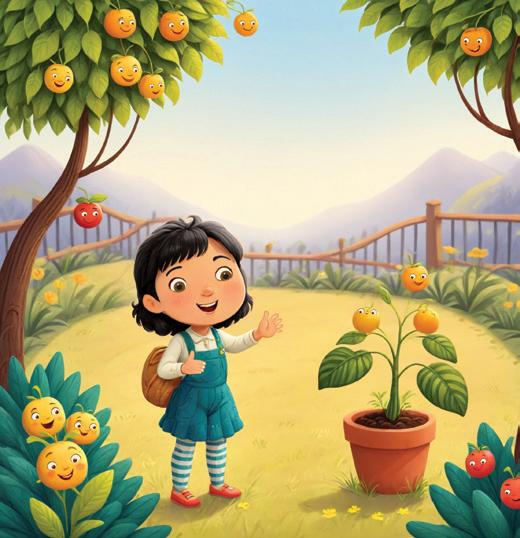
Bring a part of a plant from home. Tell us its name and colour during ‘Show and Tell’ activity the next day

Circle Time
Exploring Emotions
General Awareness Story: Kitty’s Bath Time
Book & Page
General Awareness, page 61
Foundational Literacy Letter Qq Literacy Skillbook, page 42
Foundational Numeracy Numbers 1 to 10
DIY Rhyme: A Plant
Numeracy Skillbook, pages 51–52
Rhymes and Stories, page 34
LO: Children will develop their socio-emotional skills by identifying and sharing their emotions. Resources: Simple emotion faces (happy, sad, angry, surprised) on paper or drawn on the board
1. Warm-Up: Point to each smiley face and say: Sometimes we feel happy, sometimes we feel sad. All feelings are okay! Show each emotion and make the matching expression. Let children copy you.
2. Sharing Time: Ask: How do you feel today? Let each child point to or name a face. You can guide them gently:
• Are you feeling happy because you played?
• Are you a little sleepy?
End with: Talking about feelings helps us feel better. Great job, everyone!

LO: Children will listen to and discuss the story Kitty’s Bath Time. Resources: General Awareness, page 61; a bottle of water
1. Warm-Up Discussion: Show a bowl or bottle of water and ask: What do we use water for? Let children respond freely. Say: We drink water when we are thirsty, we use it to take a bath, clean our hands, and water plants. Water keeps us clean and healthy.
2. Animals Need Water: Name some of the common animals like dog, cat, cow, elephant. Say: Animals also need water—to drink and to bathe. Ask: Have you seen a dog drinking water? or Have you seen a cat bathing? Let children share what they have seen or know.
3. Picture Talk: Ask children to open page 61 of the General Awareness book. Point to each picture and discuss them. Ask questions like: What animal do you see? / What is the girl doing? / What is the cat doing?
4. Interactive Read-Aloud: Read aloud the story Kitty’s Bath Time with voice modulations and expressions. Pause in between to show pictures and ask questions like:
• What is the name of the girl?
• Who needs a bath?
• What did Kamya put in the tub?
• How did Kamya dry the cat?





Observe different ways in which water is used at home.


LO: Children will be able to recognise the sound and symbol of letters Qq.
Resources: Literacy Skillbook, page 42

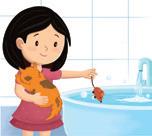
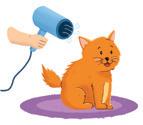

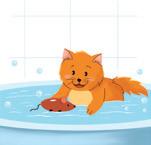



1. Recap: Point to the pictures on page 42 of the Skillbook and say their names aloud, emphasising the /kw/ sounds at the beginning. Ask children to repeat after you.

2. Reinforcing /kw/ Sound: Read the text given on page 42 aloud a few times, emphasising the /kw/ sound. Encourage children to repeat after you.
3. Blackboard Practice: Write letter Q on the board. Point to letter Q and ask children to repeat after you: Q says /kw/ /kw/ /kw/. Repeat 7–8 times.
4. Blackboard Show: Invite children to trace letter Q on the board with their finger or a piece of chalk. Encourage them to say: Q says /kw/ /kw/ /kw/.
LO: Children will count up to 10 objects.







Resources: Numeracy Skillbook, pages 51–52; some countable objects (chalks, pencils, pens, books, etc.); number flashcards (from Skillbook)

1. Hands On Counting: Place 10 pencils, erasers, or balls in front of the children. Call children one by one. Ask: Can you count and pass me 5 pencils? Continue with different numbers up to 10. Help them count slowly and aloud: 1… 2… 3… Ensure everyone gets a turn.


2. Identifying Number Symbols: Hand out the number flashcards to children. Call out a number (between 1–10) and ask them to hold up the flashcard showing the correct number. Monitor and guide, if required.




3. Numbers 1 to 10: Ask children to open page 51 of the Skillbook. Guide them to count the stars in the balloon and match them with the correct number symbol. Then, ask them to open page 52 and guide them to solve it as per the given instructions.















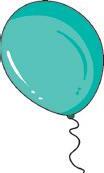








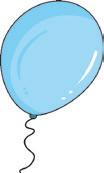






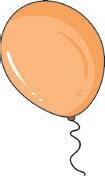
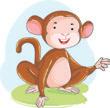
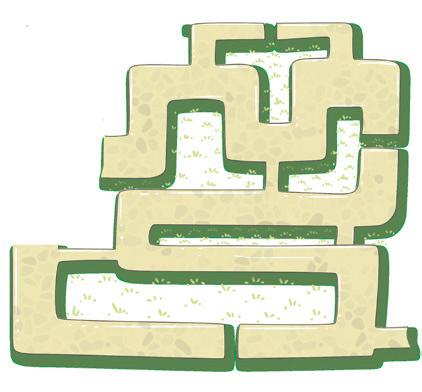




LO: Children will identify the parts of the plant and recite the rhyme A Plant Resources: Rhymes and Stories, page 34; parts of plant brought by children
1. Rhyme Time: Recite the rhyme A Plant with voice modulations and expressions and ask children to sing along. Repeat 3–4 times.
2. Show and Tell: Call children one by one and ask them to talk about the part of the plant they brought from home. Guide them to say: This is a ____. It is ______ in colour.
Keep some parts of plants like flowers, leaves, fruits etc handy, in case some children forget to bring parts of plants from home.


Domain
Circle Time
Topic of the Day
Our Special Light Inside
General Awareness Story: The Thirsty Crow
Book & Page
Foundational Literacy Letter Qq Literacy Skillbook, page 43
Foundational Numeracy Numbers 1 to 10 Numeracy Workbook, pages 30–31
DIY Line of Numbers STEM Exploration, pages 19–21
LO: Children will identify the idea of kindness and inner goodness in a gentle, simple way.
Resources: Cut-out of a small star
1. Warm-Up: Sit in a circle if possible and show the star. Say: Each one of us has a little light inside—it’s called kindness. When we do kind things like helping and sharing, our light shines bright.
2. Light Sharing: Pass the star around. When each child holds it, prompt gently: Can you name one kind thing that you can do today? Suggestions: Help a friend/say sorry/share a toy. Praise their answers warmly and end with: We all have a special light. Let’s make it shine every day!

LO: Children will listen to the story The Thirsty Crow and explore problem-solving through a hands-on activity.
Resources: A plastic jar; some pebbles; a crow puppet (optional)
1. Story Time: Say: Today we will listen to a story about a thirsty crow looking for water. Just like us, birds also feel thirsty. Narrate the short story using voice modulations and expressions. Use a simple puppet or paper crow if available. Encourage children to repeat sounds like “caw caw” and join in key actions (e.g. pretending to fly or drop pebbles).
The Thirsty Crow
One sunny day, a thirsty crow looked for water. It found a pot with just a little water inside. The crow couldn’t reach the water. So, it put small pebbles in the pot. The water came up, and the crow had a nice drink!

2. Discussion Time: Ask: What did the crow do when he was thirsty? / Was the crow smart? Let children share in short phrases or in their home language. Repeat: The crow was clever!
Ask children to share why they feel water is important and different ways in which water is used.
3. Simple Water Play: Set up a clear jar or plastic container with a little water. Let children drop small stones or beads one by one and watch the water level rise. Say: Just like the clever crow! Let each child take a turn.





With an adult, pour water into a glass from a bottle and from a tap. See which one is faster.


LO: Children will identify the symbol Q and trace letters Qq.
Resources: Literacy Skillbook, page 43
1. Recap: Ask children to name some words starting with the /kw/ sound. Guide them to emphasise the /kw/ sound as they say each word. For example: /kw/ /kw/ quilt.
2. Symbol Qq: Write capital Q on the board and explain the steps for writing it. Refer to the arrows on page 43 for guidance. Say: Q is a circle with a slanting line below. Guide them to trace letter Q in the air with their index fingers. Ask them to say: Q says /kw/ /kw/ /kw/. Repeat the same for small letter q.


3. Tracing Letters Qq: Write capital letter Q and small letter q on the floor or on the board. Call the children one by one and guide them to trace the letters with their index fingers.
Practice
4. Letters Qq: Ask children to open page 43 of the Skillbook. First, ask them to trace the letters Qq with their index fingers and then with crayons. Then, guide them to say: /kw/ /kw/ quilt and trace the patterns on the quilt.
LO: Children will count and guess the correct number symbol.
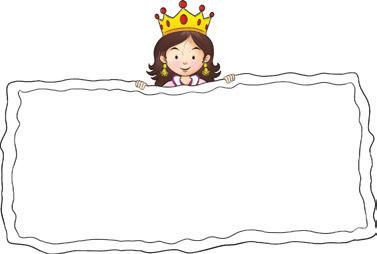

Resources: Numeracy Workbook, pages 30–31; a regular dice or a hand-made dice; some countable objects (pencils, pens, erasers, books, etc.); number flashcards (from Skillbook); bindis
1. Let Us Count: Keep the number flashcards neatly on a table. Call children one by one. Place a set of countable objects on the table. Guide children to count the number of objects and find the flashcard showing the number symbol. Ensure everyone gets a turn.
2. Rolling the Dice: Call children one by one and ask them to roll the dice. Then, let them count the dots and say the number aloud. Ensure everyone gets a turn.
You can make a hand-made dice for this activity by covering a cube box with a piece of paper and drawing dots (1–6) on it.
3. Numbers 1 to 10: Ask children to open page 30 of the Workbook. Ask them to count the number of objects and circle the correct number. Then, ask them to open page 31 of Workbook. Guide them to read the numbers and stick the same number of bindis.



















LO: Children will count numbers from 1 to 20 in the correct order. Resources: STEM Exploration, pages 19–21


1. Quick Recap: Begin with a cheerful counting song or chant from 1 to 10. Use fingers or claps to count aloud together. Say: We already know numbers up to 10. Let us see what comes next!
2. Introducing Numbers from 11 to 20: Write numbers from 11 to 20 on the board. Point to each number, and say its name aloud, and ask children to repeat after you. Repeat 4–5 times for reinforcement.
3. Identifying Numbers from 11 to 20: Call children one by one. Say aloud a number between 11 and 20 and ask children to identify the number symbol. Ensure everyone gets a turn.
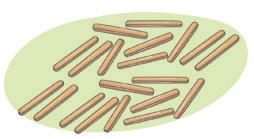

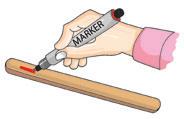

You can also use number flashcards from the Numeracy Skillbook for this activity.

Circle Time Best Time of the Day
General Awareness Why Do We Need Water?
Foundational Literacy Letter Qq
Literacy Workbook, page 27
Foundational Numeracy Number Sequence Numeracy Workbook, page 32
DIY Line of Numbers STEM Exploration, pages 19–21
LO: Children will share about the best time of their day.
Resources: A soft toy
1. Warm-Up: Say: Let us think about something that makes us really happy! Do you like mornings, afternoons, or evenings? Maybe it is the time when you play, eat something yummy, or cuddle with your family!
2. Modelling: Hold a soft toy and say: My best time of the day is in the evening when I read a storybook at home. I feel happy and calm! Smile and encourage: Now it’s your turn!
3. Sharing Time: Pass the soft toy around the circle. When a child receives it, they share their favourite part of the day—it can be anything they enjoy, like playing with toys, eating lunch, watching birds, or hugging their parents. Support children who need help by whispering prompts like: Was it playtime? Lunch? A hug from your mother? Make sure each child participates in the activity.

Share your favourite time of the day with your parents and ask them to share theirs.
LO: Children will understand the importance of drinking water through a fun game.
Resources: A soft toy; cup of water; children’s water bottles
1. Warm-Up: Use a soft toy and say: Hello friends! I feel so tired and thirsty today... I forgot to drink water! Ask the children: What should the soft toy do? (Encourage answers like Drink water!) Pour some water into a cup and pretend the soft toy drinks it. Say: Ah! Now I feel better! Tell the children: Water helps us stay active, happy, and healthy!
2. Why We Need Water: Hold up a glass or bottle of water. Say: We drink water when we feel thirsty. It cools us down, gives us energy, and helps our body work well. Ask children: What do you feel when you do not drink water for a long time? (Encourage responses like: Tired, thirsty, feeling hot, etc.)
3. Water Break Game: Say: Let us pretend we are playing and feeling tired Act it out together—running in place, then sitting down and saying: I am thirsty! Give each child their water bottle and say: Let’s take a water break like healthy kids! Encourage them to sip their water with a smile.







LO: Children will identify the symbol of letters Qq and the objects that start with the /kw/ sound. Resources: Literacy Workbook, page 27
1. Listening to Words: Say some words in a random order. Ask the children to clap only when they hear the beginning sound /kw/. Example: apple, queen, car, quill, quill, bag and so on.
2. Identifying Qq Symbol: Write some letters on the board, including letters Qq. Call children one by one and guide them to identify and point to the letters Qq.
3. Letters Qq: Ask children to open page 27 of the Workbook. Guide them to match the pictures that start with the /kw/ sound with letters Qq. Then, ask them to colour the circles that have the letters Qq.
LO: Children will count from numbers 1 to 10 in a sequence.
Resources: Numeracy Workbook, page 32; number flashcards (from Skillbook)









1. Sequencing Numbers: Hand out the number flashcards to the children. Ask them to place the flashcards in a sequence, from 1 to 10, on their tables. Monitor and guide them as required.


2. Number Sequence: Ask children to open page 32 of the Workbook. Guide them to colour numbers from 1 to 10 in a sequence to help the puppies reach the dog.
Ask questions like What comes after 1? What comes after 2? and so on while solving.
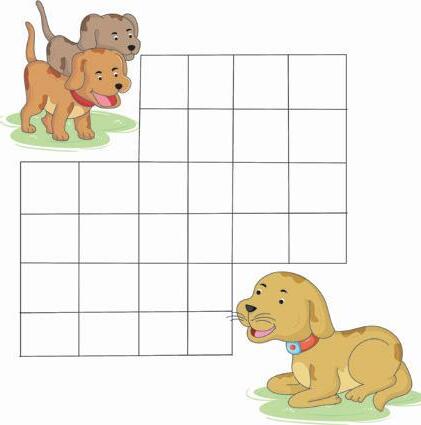


LO: Children will say numbers from 1 to 20 in a sequence and identify the number symbols.
Resources: STEM Exploration, pages 19–21; ice-cream sticks with numbers written from 1–20 (one number on each stick)
1. Counting From 1–20: Write numbers from 1–20 on the board. Count aloud numbers from 1–20, and ask children to repeat after you. Point to the numbers as you count. Repeat 3–4 times for reinforcement.
2. Identifying Numbers From 1–20: Lay the numbered ice-cream sticks nicely on the table. Call children one by one, give them a number between 1 and 20 and guide them to pick up the ice-cream stick showing the number.
3. Line of Numbers: Ask children to open pages 19–21. Conduct the activities as instructed in the chapter and guide children to solve the questions.
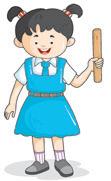











Domain General Awareness
Learning Outcome Children will talk about why we need to drink water.
Suggested Method Call children one by one. Ask: Why do we need to drink water? Encourage them to share in their home language if required. Clap for each child and give them a smiley. Ensure everyone gets a turn.
Support for Struggling Learners
Gather the learners and ask: How do you feel when you do not drink water? Let children share freely. Then, explain: Water helps us stay active, happy, and healthy! We drink water when we feel thirsty. It cools us down, gives us energy, and helps our body work well.
Domain Foundational Literacy
Learning Outcome Children can identify the /kw/ sound and recognise the letters Qq.
Resources Letter flashcards of any 5 letters, including Q (from Skillbook)
Suggested Method Keep the flashcards neatly on a table. Call children one by one. First, ask them to identify and pick the flashcard showing the letter Q. Then, ask them to name two things that start with the /kw/ sound. Clap for each child and ensure everyone gets a turn.
Support for Struggling Learners
Gather the struggling learners together. Write Q and q on the board and guide them to say: Q says /kw/ /kw/ /kw/. Then, say names of some objects starting with /kw/ sound, and say for example: /kw/ /kw/ queen. Finally, guide the children to trace the letters Qq in the air with their index fingers.
Domain Foundational Numeracy
Learning Outcome Children will count numbers from 1 to 10 in sequence.
Resources Number flashcards from 1–10 (from Skillbook)
Suggested Method Give number flashcards from 1 to 10 to each child. Ask children to place the number flashcards in order. Monitor and guide children as required.
Support for Struggling Learners
Gather the learners and guide them to count 10 fingers. Then write numbers from 1–10 on the board. Read aloud the numbers in sequence and ask children to say aloud after you. Repeat 3–4 times.


















Domain
Topic of the Day
Circle Time Body Parts Freeze
General Awareness Water For All
Book & Page
General Awareness, page 62
Foundational Literacy Letter Rr Literacy Skillbook, page 44
Foundational Numeracy Triangle Numeracy Skillbook, page 53
DIY Colours
Art and Craft, page 21
LO: Children will participate in a movement-based activity to identify body parts.
Resources: Music
1. Warm-Up: Greet the children warmly. Begin by doing simple actions and movements with different body parts. Give instructions like:
• Let us stretch up our hands.
• Let us shake our legs.
• Let us blink our eyes.
2. Body Part Freeze: Ask children to begin dancing or do some simple movement as soon as music starts. When the music stops, ask children to freeze in one place. Then, call out an action with a body part and they have to do the same. For example, say: Blink your eyes / Wiggle your fingers / Touch your toes etc.

LO: Children will identify the different uses of water.
Resources: General Awareness, page 62; a transparent water bottle
Introduction
1. Rhyme Time: Recite the rhyme Water Water with voice modulation and expressions. Ask children to sing along. Repeat singing the rhyme at least 3–4 times.
2. Discussion Time: Begin by showing a cup or bottle of water. Ask: What is this? Who needs water? Let children respond. Then guide them to say: I drink water. Animals and plants need water too! Water is for everyone—we must not waste it.
Water Water
Water for you, water for me, Water for the plant and tree! Don’t let the tap go drip, drip, drip, Close it tight—twist, twist, twist!
3. Water for All: Ask children to open page 62 of the General Awareness book. Point to the pictures one by one and discuss them. For example: We drink water. / We wash utensils with water.







LO: Children will identify the objects starting with /r/ sound of letters Rr.


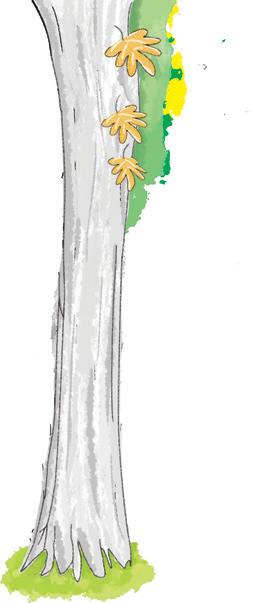





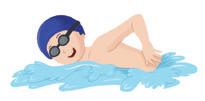
Resources: Literacy Skillbook, page 44; objects starting with /r/ sound (ring, rubber, rose, etc)
1. Warm-Up: Show the objects to the children, emphasising the /r/ sound and say its name clearly. Draw their attention to the beginning sound of the words. Say: /r/ /r/ rose or /r/ /r/ robot Ask children to repeat after you.
2. Looking at the Pictures: Ask children to turn page 44 of the Skillbook and point to each picture one by one. Say the names aloud emphasising the beginning sound /r/. Encourage children to say the words clearly, focusing on the /r/ sound. Example: /r/ /r/ rabbit OR /r/ /r/ rose
3. Reinforcing the /r/ Sound: Read the text given on page 44 several times, highlighting the /r/ sound. Encourage children to listen carefully and repeat after you.
LO: Children will identify a triangle shape and objects that are triangular. Resources: Numeracy Skillbook, page 53; cut out of a triangle; tape or chalk




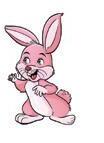





1. Looking at a Triangle: Hold up a large triangle cut-out made from cardboard or paper. Say: Look at this shape! It has three sides and three corners. It’s called a triangle! Point to each side and corner as you count aloud: One, two, three—three sides! Now look around the classroom together. Ask: Can you spot anything shaped like a triangle? Guide them if needed (e.g., flags, cut-outs, paper decorations).
2. Triangle Walk: Use tape or chalk to draw a big triangle on the floor. Ask children to walk along the lines of the triangle one by one. Say: Let us walk on the triangle—turn at each corner!

3. Triangle: Recite the rhyme given on page 53 of the Skillbook. Ask children to repeat after you. Then, help them identify objects that are triangular in shape.



Find objects that are triangular in shape at home. Colour the triangle given on page 53 of the Skillbook.
LO: Children will develop fine motor skills by colouring balloons using different colours. Resources: Art and Craft, page 21; crayon sets (per child); a balloon; music
1. Balloon Play: Ask children to stand in a circle, if possible Play music and pass the balloon around. Repeat for 2–3 rounds. Say: We are going to colour balloons today.
2. Colours: Ask children to open page 21 of the Art and Craft book. Guide them to colour the balloons with different crayons.










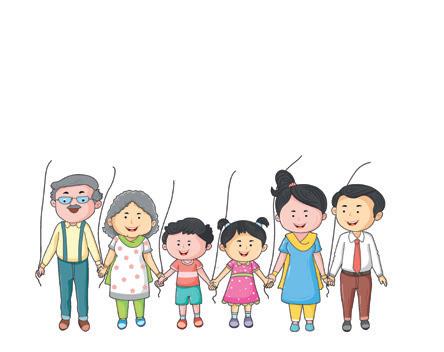

Circle Time
Sharing is Caring
General Awareness Rhyme: Rain on the Green Grass
Foundational Literacy Letter Rr Literacy Skillbook, page 44
Foundational Numeracy Triangle Numeracy Skillbook, pages 53–54
DIY Drip Painting
LO: Children will talk about one thing they would like to share with their friends.
Resources: A soft toy
1. Story Time: Narrate The Pulao Story with expressions and voice modulation. Emphasise how Meera shared her food with Aarav and helped him. Explain: We should share our things with friends. It makes us happy.
2. Circle of Sharing: Pass around a soft toy. The child holding the toy shares one thing that they would like to share with their friends. Also, ask them to share some instances when they have shared something with someone. Assist children by giving simple prompts if needed.

The Pulao Story Little Meena brought some tasty pulao in her lunchbox. Her friend Aarav forgot his lunchbox and looked very sad. Meena smiled, moved her lunchbox closer, and said, “Let’s share!” Aarav’s eyes lit up. They sat together in the classroom and ate happily. Soon, other friends joined in too—and Meena shared with everyone. Lunchtime became the happiest time of the day!
LO: Children will develop their listening and speaking skills by reciting a rhyme on rain and talking about rain.
Resources: Chalk; blue paint; strip of green paper to represent grass; drawing sheet (1 per child)
Introduction
1. Warm-Up Discussion: Ask children: What happens when it rains? What do you see? Let them share freely. Draw simple pictures of clouds, raindrops falling on the ground and on the trees, puddles to help children build a connection.
Rain on the Green Grass Rain on the green grass, Rain on the tree, Rain on the rooftop, But not on me!
2. Rhyme Time: Recite the rhyme Rain on the Green Grass with voice modulation and expressions, and ask children to sing along. Repeat 4–5 times to help children remember the rhyme.

3. Rain Craft: Give drawing sheets to the children. First, help them paste strips of green paper on the bottom of the sheet, to represent grass. Say: We are making green grass. Then, guide them to dip their index finger in the blue paint and make raindrops. Say: We are making raindrops.
Display the art work made by children on the classroom wall or on a soft board.







LO: Children will recognise the sound and symbol of the letters Rr.
Resources: Literacy Skillbook, page 44
Introduction
1. Recap: Point to the pictures on page 44 of the Skillbook and say their names aloud, emphasising the /r/ sounds at the beginning. Ask children to repeat after you.
2. Reinforcing the /r/ Sound: Read the text given on page 44 aloud a few times, emphasising the /r/ sound. Encourage children to repeat after you.
3. Blackboard Practice: Write the letter R on the board. Point to letter the R and ask children to repeat after you: R says /r/ /r/ /r/. Repeat 7–8 times.










4. Blackboard Tracing: Invite children to trace letter R on the board with their finger or a piece of chalk. Encourage them to say R says /r/ /r/ /r/.
Identify some things that start with /r/ sound at home.
LO: Children will be able to identify and trace a triangle.
Resources: Numeracy Skillbook, pages 53–54
Introduction
1. Recap: Recite the poem on triangle given on page 53 of the Skillbook and ask children to follow along. Then, guide them to identify the triangle-shaped objects given on the page.
2. Tracing a Triangle: Draw a triangle on the board and show its 3 sides. Say: 1, 2, 3,—3 sides. Then call children one by one and guide them to trace the triangle with their index finger. Ensure everyone gets a turn.
3. Do and Learn: Ask children to open page 54 of the Skillbook. Guide them to trace the dotted lines of the triangles using crayons of different colours.














LO: Children will explore colours and patterns through drip painting to support fine motor development and creativity.
Resources: A3 or A4 size thick paper (taped to a table or on the floor); Watered-down paint in small cups (use only 2–3 colours); droppers; brushes
1. Talking about Colours: Gather children in a circle and show 2–3 basic colours (red, blue, yellow). Say: Today, we will paint in a fun way—by letting the paint drip! Let them name the colours they see.
2. Drip Painting: Call children in small groups. Give each child a dropper and a small cup of watereddown paint. Show how to gently squeeze the dropper and let the paint drip onto the paper. Say: Let’s see how the paint drips down—drop by drop! Encourage children to watch how the colours spread and mix as they drip.

Circle Time
General Awareness
Sorting Activity
Sounds and Rhythm of Rain
Foundational Literacy Letter Rr
Literacy Skillbook, page 45
Foundational Numeracy Triangle Numeracy Workbook, page 33
DIY Story: Chintu and Mintu
Rhymes and Stories, pages 35–39
LO: Children will develop their cognitive skills by sorting objects into correct categories.
Resources: Two trays of different colours; a box; a bag with mixed objects (example: crayons and pencils)
1. Warm-Up: Show a pencil and ask: What is this? Let the children respond, then say: Yes, it’s a pencil. Next, show a crayon and ask the same question: What is this? Let them respond, and then say: Yes, it’s a crayon. Now, show the box and explain: This bag has a mix of crayons and pencils, and we need to sort them. Explain that one tray is for pencils and the other is for crayons.
2. Sorting Time: Call children one at a time. Guide them to take a few items from the bag and sort them correctly by placing them into the appropriate trays. At the end, say: Great job! We have sorted the pencils and the crayons.
With the help of an adult, take two different vegetables in a bowl (e.g., potatoes and tomatoes) and sort them into separate groups.


LO: Children will explore the sound and rhythm of rain using their bodies and classroom surfaces.
Resources: An umbrella
1. Warm-Up Discussion: Say: Today we will make rain using our hands and fingers! Ask the children: Have you heard rain falling on your window or roof? Let them share what they remember. Then show the umbrella and say: We use an umbrella when it rains.
2. Rain Sound Game: Guide children through this fun body percussion rain routine. Ask them:
• Wiggle your fingers for a drizzle… (wiggle fingers in the air)
• Tap your desk for light rain… (light tapping with fingertips)
• Clap your hands for heavy rain! (clap gently)
• Now shhh… the rain has stopped. (place finger on lips)
Repeat once or twice to let them enjoy the rhythm of the rainy day.
3. Rainy Day Actions: Now, guide children to do some simple actions one does on a rainy day. Give instructions like:
• Opening an umbrella.
• Putting on pretend rain boots.
• Jumping in pretend puddles (in place).







LO: Children will identify and trace the letters Rr.
Resources: Literacy Skillbook, page 45
1. Recap: Ask children to name some words starting with the /r/ sound. Guide them to emphasise the /r/ sound as they say each word. For example: /r/ /r/ robot.
2. Symbol of letters Rr: Write capital R on the board and explain the steps for writing letter R. Refer to the arrows on page 45 of the Skillbook for guidance. Say: R is a standing line with a right curve on top and a slanting line. Guide them to trace letter R in the air with their index fingers. Ask them to say: R says /r/ /r/ /r/. Repeat the same for the small letter r.
3. Tracing Letters Rr: Write capital letter R and small letter r on the floor or on the board. Call the children one by one and guide them to trace the letters with their index fingers.
4. Letter Rr: Ask children to open page 45 of the Skillbook. First guide them to trace the letters Rr with their index fingers and then with crayons. Then, say: /r/ /r/ rabbit and guide them to trace the dotted lines to help the rabbits reach the rings.










LO: Children will identify the triangle shapes and objects that are triangular.
Resources: Numeracy Workbook, page 33; shapes flashcards (from Skillbook)
1. Spotting Triangle: Give the shapes flashcards to the children. Ask them to identify and hold up the flashcard showing a triangle. Monitor and guide as required.
2. Hop on the Triangle: Draw some shapes on the floor (square, rectangle, triangle, etc.). Call children one by one and ask them to hop on all the triangles. Ensure everyone gets a turn.
3. Triangle: Ask children to open page 33 of the Workbook. First, guide them to match triangles of the same colour. Then, ask them to tick all the triangle shapes.
LO: Children will listen to the story Chintu and Mintu and discuss its pictures.
Resources: Rhymes and Stories, pages 35–39
1. Warm-Up Discussion: Begin by asking: Can you share something that you love doing on a rainy day? Let children share their responses freely. Encourage them to share in their home language, if required.
2. Picture Talk: Ask children to refer to the pictures from pages 35–39. Discuss the pictures one by one with the children. Ask questions like: Which animal do you see? / What are the frogs doing? / What season is it? / Which flower do you see in the pond?


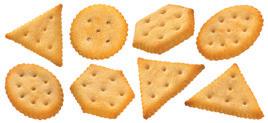


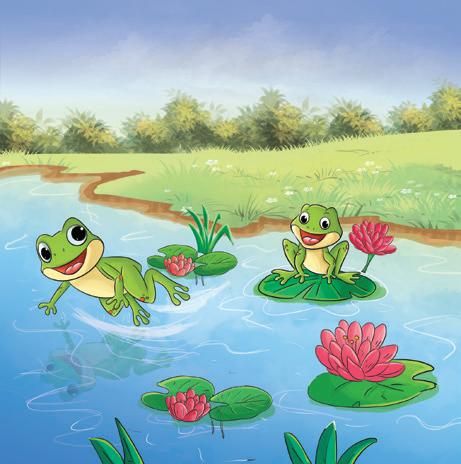
You can do a fun movement activity by asking children to hop or jump like a frog.
Circle Time
General Awareness
Tear and Paste
Sources of Water
Foundational Literacy Letter Rr Literacy Workbook, page 28
Foundational Numeracy Fun with Triangles
DIY Story: Chintu and Mintu Rhymes and Stories, pages 35–39
LO: Children will develop their fine motor skills and eye-hand coordination through a simple tear and paste activity.
Resources: Scrap paper or newspaper; glue stick; large paper cut-out in the shape of a heart or star
1. Warm-Up: Gather children and hold up a plain sheet of paper. Say: Look! I have some paper. Can you tear it like this?
Model tearing the paper slowly into small bits using both hands. Let the children observe. Then hand each child a small piece and encourage them to try tearing it themselves.
2. Activity Time: Show a large paper cut-out in the shape of a heart or star (made beforehand). Say: We will decorate this together! Give torn paper bits to each child. Call children one by one to the table. Help them apply glue and paste the bits to the shape. Keep encouraging them by saying things like: Great pasting! You are making it look so colourful!
Display the finished piece on the wall with the label: Our Teamwork Art!

LO: Children will identify and name the common sources of water through a story and a fun activity.
1. Warm-Up: Begin by asking: What are the uses of water? Encourage children to share freely in any language. Then, say: We get water from many places—let’s find out more!
2. Story Time: Narrate the story Water Around Us with expressions and voice modulation. Repeat the story 2–3 times. After the story, ask questions like:
• Where did Ravi get water from?
• Have you seen water come from a tap? From rain?

3. Jump for Water: Tell the children: If I say something that gives us water, you jump up. If it doesn’t give us water, you stay still! Call out items one by one: tap, rain, shoes, tree, river, box, pond, car, bottle, sky, glass. Pause after each word for children to respond with action.







Ravi was very thirsty. He looked around and saw a tap. He turned it on and drank some water—“Ah, that feels better!” he said.
Just then, it started to rain. “Look! Water from the sky!” Ravi laughed.
Later, he went to the park with his parents and saw a big pond. Ducks were swimming in it! Ravi smiled and said, “Water is all around us—we must take care of it!”
LO: Children will identify the letters Rr and name things that start with the /r/ sound.
Resources: Literacy Workbook, page 28
Introduction
1. Identifying /r/ Sound: Say some words in a random order. Ask the children to jump only when they hear the beginning sound /r/. Example: apple, rabbit, car, robot, rice, bag and so on.
2. Identifying Symbol Rr: Write some letters on the board, including letters Rr. Call children one by one and guide them to identify and point to letters Rr.
3. Letters Rr: Ask children to open page 28 of the Workbook. First, guide them to match the objects starting with /r/ sound with letter R. Then, guide them to circle the triangles that show the letters Rr.









LO: Children will recap the shape triangle through an origami activity and a game. Resources: Three triangle cut-outs; square sheet of paper (one per child); crayons; ice cream sticks (3 per child)
Introduction
1. Triangle Hunt: Gather children in a circle. Show a big triangle cut-out and say: This is a triangle—it has three sides and three corners! Distribute the ice cream sticks to each child. Demonstrate how to make a triangle using the ice cream sticks. Guide them to make a triangle.
2. Triangle Origami Fun: Call children in small groups. Give each child a square piece of paper. Help them fold it corner to corner to make a triangle. Say: Let’s fold it like a sandwich—now it’s a triangle! They can draw a face or decorate it with crayons.
3. Triangle Corner Game: Place three triangle cut-outs on the floor to form a large triangle shape. Ask 3 children to stand on each corner. Then play music and let them walk around the shape. When music stops, they must quickly find a triangle corner to stand on. Rotate children so everyone gets a turn. Say: We walk and stop—just like a triangle has three corners! Draw a triangle with a crayon in your notebook.
LO: Children will play a fun game and listen to the story of Chintu and Mintu. Resources: Rhymes and Stories, pages 35–39; a soft rain music or gentle tapping
1. Warm-Up: Tell the children: Let’s pretend it’s raining! What do we do when it rains? Do we splash, jump in puddles, or run with umbrellas? Let children share their responses freely.
2. Rain and Puddles: Play soft music or tap gently on a table to make a rain sound. Say: When I say “Raindrop” you wiggle your fingers. When I say “Puddle”, you jump. Vary the pace and switch the words to keep them engaged.
3. Interactive Read-Aloud: Read aloud the story Chintu and Mintu with expressions and voice modulations. Pause in between to show relevant pictures and ask them questions. Ask questions like:
• Where are Chintu and Mintu playing?
• What did Chintu and Mintu feel?
• What did Chintu and Mintu use as umbrellas?
• What was in the sky after the rain stopped?

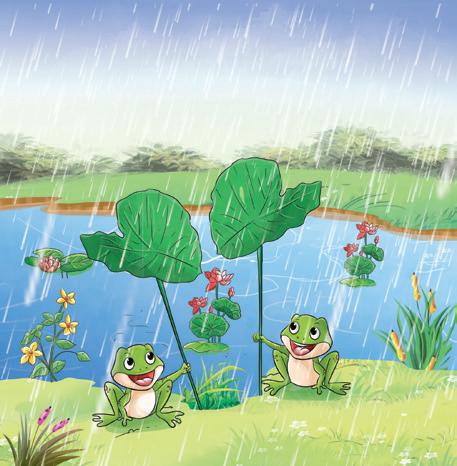








Domain
Learning Outcome
General Awareness
Children identify and share some uses of water.
Resources General Awareness, page 62
Suggested Method Call children one by one. Ask them to hold the marker as a pretend microphone. Ask them the following questions:
• Is water used for cooking?
• Is water used for bathing?
• Is water used for sleeping?
• Is water used for drinking?
• Is water used for playing?
Ensure everyone gets a turn and cheers for all children.
Support for Struggling Learners
Domain
Gather the learners together. Show them the pictures from page 62 of the General Awareness book and point to them one by one. Discuss the uses of water in detail.
Foundational Literacy
Learning Outcome Children can identify the /r/ sound and recognise the letters Rr.
Resources Literacy Skillbook, page 64; chalks; letter flashcards (from Skillbook)
Suggested Method Keep the flashcards neatly on a table. Call children one by one. First, ask them to identify and pick the flashcard with letter R. Then, ask them to say at least 2 words that start with /r/ sound. Clap for each child and ensure everyone gets a turn.
Support for Struggling Learners
Domain
Gather the struggling learners together. Write letters R and r on the board and guide them to say: R says /r/ /r/ /r/. Then, show them pictures of objects starting with /r/ sound from page 44 of the Skillbook. Say, for example: /r/ /r/ robot. Finally, guide the children to trace the letters Rr in the air with their index fingers.
Foundational Numeracy
Learning Outcome Children will identify and trace a triangle shape.

Resources Shapes flashcards (from Skillbook)
Suggested Method Give the shapes flashcards to the children. Ask them to hold up the flashcard showing a triangle. Then, call children one by one and guide them to trace a triangle on the board. Ensure everyone gets a turn.
Support for Struggling Learners
Draw a triangle on the board and show its three sides to the children. Then, ask children to hold up the flashcard showing a triangle shape and an object shaped like a triangle (use flashcards from the Skillbook). Then, guide children to trace the triangle shape in the air with their index finger.



































Domain
Circle Time Kind Words Circle
General Awareness Who Needs Water?
General Awareness, page 63
Foundational Literacy Once More Literacy Workbook, page 29
Foundational Numeracy Rectangle Numeracy Skillbook, page 55
DIY Rhyme: I Hear Thunder Rhymes and Stories, page 40
LO: Children will use kind and polite language through a fun activity. Resources: A soft toy
1. Knowing Kind Words: Say: Today, we will talk about kind words. Kind words make others feel happy and loved. Can you think of a word that makes you feel happy? Model a few examples:
• When someone says thank you, it feels nice.
• When we say please, we are being polite.
• Calling someone a friend makes them feel happy.
2. Kind Word Circle: Hold a soft toy and say: We will pass this soft toy. When you hold it, say a kind word like thank you, friend, or please. If you need help, I can whisper the word to you. Start the game and help each child say one kind or polite word. Examples of kind words: please / thank you / you are nice / sorry. Guide children, if they struggle and make it joyful and pressure-free. If a child is shy, let them smile or nod instead.

LO: Children will identify the importance of water and who needs it.
Resources: General Awareness, page 63; a leaf, animal toy, toys, book, marker, etc.; two boxes, crayons
1. Warm Up Discussion: Gather the children and ask: Do you drink water when you are thirsty? Let them respond. Then ask: Do animals and plants also need water? Use gestures—pretend to drink, water a plant, or show an animal drinking—to make it engaging.

2. Sorting Activity: Place a few real or toy objects in front of the children (or use drawn cut-outs if available). Say: Let us find out who needs water! Call children one by one. Ask them to pick an item and place it in one of two boxes labelled: Needs Water (plants, animals) / Doesn’t Need Water (toys, books, marker).

If objects are not available, you can name some objects and let children say whether those items need water or not.
3. Who Needs Water?: Ask children to open page 63 of the General Awareness book. Explain the pictures. Say: The dog is drinking water. / The boy is watering the plant. Then, ask them to colour the pictures.







LO: Children will identify objects the begin with the sounds /p/, /kw/ and /r/.
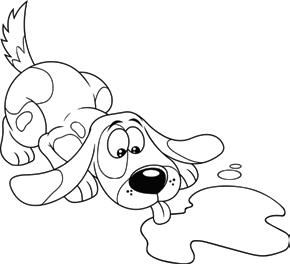


Resources: Literacy Workbook, page 29; letter flashcards P, Q and R (from Skillbook); sticker sheet (from Workbook)
1. Guess the Beginning Letter: Hand out the letter flashcards to the children. Then call out the names of objects one by one that begin with the /kw/ or /r/ sounds. For example, say: queen, pen, rabbit, paint, robot, quill and so on. Ask children to listen carefully and hold up the flashcard showing the beginning letter of the word. Monitor and guide as required.
2. Once More: Ask children to open page 29 of the Workbook. First, guide them to identify the pictures and circle the correct letter. Then, help them to paste the correct letter under each picture from the sticker sheet.












LO: Children will identify the rectangle shape and objects that are rectangular in shape.
Resources: Numeracy Skillbook, page 55; rectangle-shaped objects
1. Knowing a Rectangle: Begin by holding up a real object shaped like a rectangle (a book or a piece of paper). Say: Look! This shape is called a rectangle. Can you say rectangle? Count and show the 4 sides of a rectangle. Walk around the class and help children spot rectangle-shaped objects around them (chalkboard, doors, notebooks).
2. Spot the Rectangle: Draw some shapes, including rectangles on the blackboard. Call children one by one and guide them to spot the rectangles. Ensure everyone gets a turn.
3. Rectangle: Recite the rhyme 3–4 times from page 55 of the Skillbook. Then, ask children to open the page and show them pictures of different objects that resemble a rectangle.
LO: Children will recite the rhyme I Hear Thunder Resources: Rhymes and Stories, page 40
1. Warm-Up Discussion: Begin by asking: Have you heard thunder, when it rains or during a storm? How do you feel? Let children share their responses freely. Ask children to cover their ears as if they are hearing a loud thunderclap. Say: Today we will recite a poem on thunder.
2 Rhyme Time: Recite the rhyme I Hear Thunder with voice modulation and expressions and ask children to sing along. Repeat 3–4 times to help children remember the rhyme.













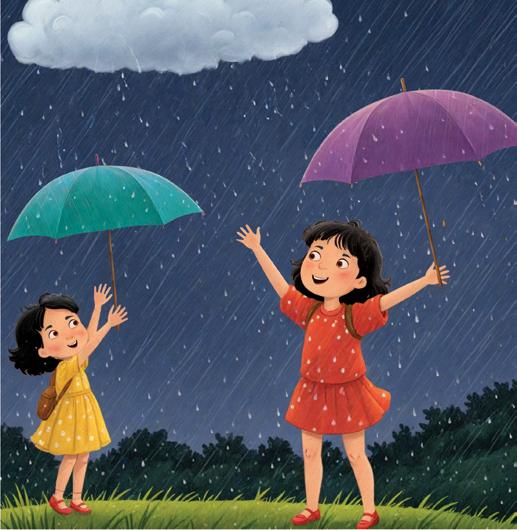

Domain
Topic of the Day
Circle Time What’s in the Bag?
General Awareness Water for All
Book & Page
Foundational Literacy Story: Rohan’s Bath Time Literacy Skillbook, page 46
Foundational Numeracy Rectangle Numeracy Skillbook, pages 55–56
DIY Rhyme: I Hear Thunder Rhymes and Stories, page 40
LO: Children will build vocabulary by identifying common objects used in daily life.
Resources: A bag; some objects (spoon, ball, cup, crayon, socks, etc.)
1. Warm-Up: Gather the children in a circle. Show them a soft cloth bag. Say: Look at this bag! Something is inside. Can you guess what it is? Let the children guess. Encourage all answers—even gestures or home language. Say: Great guess! Let’s see what’s inside!
2. What’s in the Bag: Take out one item at a time from the bag. Show it clearly and ask: What is this? If the child knows, let them answer. If not, say: This is a spoon. Can you say spoon? Encourage them to repeat. Let children touch or hold the item if time allows.

LO: Children will listen to a story and understand why water is needed.
1. Story Time: Narrate the story The Thirsty Garden with expressions and voice modulation. Discuss the story by asking them questions like:
• Who did Tara give water to?
• Who was lying in the shade?
• What did Tara do when she was thirsty?
• Why did the plants, animals, and Tara need water? Emphasise that all living things need water (humans, plants and animals).
The Thirsty Garden
One sunny day, the garden was very dry. A little girl named Tara gave water to her plants. The plants looked happy and green again! Then, she saw a dog lying in the shade, feeling hot. She gave him some water, and he wagged his tail! Tara was also thirsty, so she drank water from her bottle. Everyone felt better. Water made them all feel happy!
2. Talking and Doing: Talk about how all living things need water:
• Plants need water to grow.
• Animals need water to drink and stay cool.
• We need water to drink, bathe, cook and stay healthy.
Use simple actions like:
• Pretending to water a plant (hand action).
• Pretending to drink water.
• Pretending to give water to animals.
Allow the children to imitate the actions and repeat the sentences after you.







LO: Children will discuss pictures from the story Rohan’s Bath Time and share common things found in a bathroom.
Resources: Literacy Skillbook, page 46; common the bathroom items (soap, towel, bucket, mug, toothbrush, etc.)
1. Warm-Up: Ask: Do you take a bath every day? When do you take a bath? Let children answer freely. Say: Bathing keeps us clean and fresh.
2. Objects in a Bathroom: Show the real bathroom items one by one items. Say their names aloud and ask children to repeat after you.
3. Picture Talk: Ask children to open page 46 of the Skillbook and discuss the pictures. Ask them questions like:
• What bathroom items can you see?
• What is the boy doing?
• Where is the water coming from?
• What do you think the mother is doing?

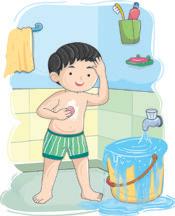
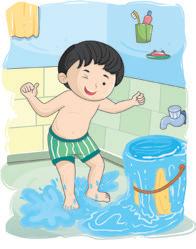


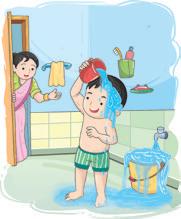
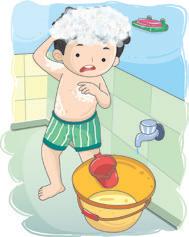
Look at different things kept in the bathroom at your home.
LO: Children will identify and trace the shape of a rectangle.
Resources: Numeracy Skillbook, pages 55–56; shape flashcards (from Skillbook)

1. Identifying Rectangle: Hand out the shape flashcards to the children. Ask them to hold up the flashcard showing the rectangle shape. Monitor and guide as required.
2. Fun with Tracing: Draw a large rectangle on the floor or board. Invite children in small groups to trace the shape with their finger or walk along the sides if on the floor. Say: A rectangle has 4 sides—two long and two short! Encourage repetition of the word rectangle.
3. Rhyme and Colouring: Recite the rhyme from page 55 of the Skillbook 3–4 times along with children. Then ask children to colour the rectangle.
4. Tracing a Rectangle: Ask children to open page 56 of the Skillbook. First, ask children to trace the rectangle with their index fingers and then with crayons.

















LO: Children will recite the rhyme I Hear Thunder and play an action game. Resources: Rhymes and Stories, page 40
1. Rhyme Time: Recite the rhyme I Hear Thunder with expressions and voice modulation. Repeat 3–4 times along with children.
2. Rainy Day Sounds: When you say ‘Raindrops’ ask children to make a drizzling sound by tapping their fingers on their table. When you say ‘Thunder’ ask them to clap their hands loudly. Mix up the commands to make it fun and engaging.
You can also play an audio of a thunderstorm in the classroom.


Domain
Topic of the Day
Circle Time Name Clap Game
General Awareness
Saving Water
Book & Page
General Awareness, page 64
Foundational Literacy Story: Rohan’s Bath Time Literacy Skillbook, page 46
Foundational Numeracy Rectangle Numeracy Workbook, page 34
DIY Animal Walk
STEM Exploration, pages 22–24
LO: Children will recognise syllables in their names, develop listening and speaking skills, and build a sense of self and belonging.
1. Warm-Up: Begin by explaining that we all have names. Ask a few children to share their names. Say: Let us play with our names today. Names have a fun beat! Let’s find it by clapping! Model with your own name first. For example: My name is Ree-na. Let’s clap—Ree (clap), na (clap)!
2. Name Clapping Game: Call each child one by one. Say their name slowly and clearly. Together with the group, clap once for each syllable in the child’s name. For example: Amita - A-mi-ta = 3 claps. Let children repeat the clapping for their friends too.

LO: Children will identify the importance of saving water in everyday life. Resources: General Awareness, page 64
1. Warm-Up Discussion: Begin by asking: Where do we use water? / What happens if there is no water? Let children respond freely—support with simple examples like: Water is used for brushing teeth, drinking, and watering plants. Do a pretend play game:
• Show how we turn off a tap with hand motions.
• Pretend to water a plant carefully.
2. Story Talk: Tell a short story: Rani leaves the tap running while brushing. Oh no! So much water is wasted! Her mother tells her to turn it off when not using it. Now, Rani always saves water!
Ask: What did Rani do to save water? (Help them say: Turn off the tap!) Say: Water is very important. Let us not waste it!

3. Action Game: Say some situations to the children. Ask them to show a thumbs down if it is about wasting water. Give situations like:
• Playing with water
• Leaving the tap on
• Watering the plants
• Using water for cooking
• Keeping the tap open while brushing teeth
Monitor and guide as required.
4. Saving Water: Ask children to open page 64 of the General Awareness book. Guide them to look at the pictures and tick the ones that show saving water.










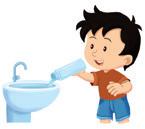

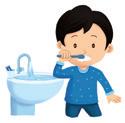

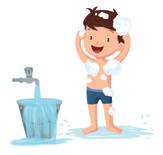
LO: Children will discuss the story of Rohan’s Bath Time and understand that we should not waste water.
Resources: Literacy Skillbook, page 46
1. Setting the Context: Begin by asking: Name a few items that you see in a washroom. Let children share their answers. Then ask: What do we use to take a bath? Encourage responses like water, soap, shampoo, towel, etc.
2. Rohan’s Bath Time: Ask children to open page 46 of the Skillbook. Guide them to look at the pictures one by one and discuss them. Ask the following questions to children:
Picture 1: What is the boy doing?
Picture 2: What is Rohan’s mother asking him to do?
Picture 3: Do you think Rohan is wasting water?
Picture 4: What do you think is happening in the picture? At the end emphasise that we should not waste water and use only as much as we need.
LO: Children will identify and sort rectangle and colour them.







Resources: Numeracy Workbook, page 34; cutouts of different shapes (circles, triangles, squares, and rectangles) in a box
1. Sorting the Rectangle: Keep all the shapes in a box. Call children one by one and guide them to find all the rectangles. Ensure everyone gets a turn.
2. Rectangle: Ask children to open page 34 of the Workbook. Guide them to find and colour the rectangles. Monitor and guide as required.
With an adult’s help, use a plate of flour to trace a rectangle shape.


LO: Children will develop gross motor skills by moving like different animals. Resources: STEM Exploration, pages 22–24; pictures of 4 animals (elephant, bird, duck and snake)
1. Identifying the Animals: Show the picture cards to children one by one. Ask children to name the animals and repeat the names after you.
2. Animal Walk: Show the picture of the animals and ask children to imitate the steps of the animals in the following manner:
• Elephant (stomp your feet)
• Bird (flap hands like wings)
• Duck (waddle like a duck)
• Snake (slither like a snake)
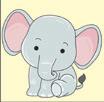

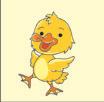
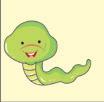

You can also do actions of other animals such as hopping like a rabbit, jumping like a kangaroo, etc.

Circle Time
General Awareness
Foundational Literacy
Clap in a Pattern
Rhyme: Save Water
Colouring Things We See in a Bathroom Literacy Skillbook, page 47
Foundational Numeracy Rectangle
DIY
Animal March
STEM Exploration, pages 22–24
LO: Children will develop cognitive skills by identifying and clapping in a pattern.
1. Setting the Context: Say: Today we will play a game called Clap in a Pattern! We’ll take turns clapping—one clap, then two claps, then one clap again… Can you follow the pattern?
Model the pattern with your own hands: Clap once → Clap twice → Clap once → Clap twice
2. Clapping in a Pattern: Gather the children in a circle, if possible. The first child gives 1 clap. The next child gives 2 claps. Then 1 clap, then 2 claps, and so on. Continue the pattern around the circle. Assist those who need help and make sure each child gets a chance to participate.
To make it a little challenging after a few rounds, introduce 3 claps—now the pattern becomes: 1 clap – 2 claps – 3 claps – 1 clap – 2 claps – 3 claps…

LO: Children will recite a rhyme about saving water. Resources: A small cup of water (optional)
1. Warm-Up: Show a small bottle or cup of water to children. Begin with a short discussion. Say: Do we all need water? Yes! For drinking, bathing, washing and more! But we must not waste it. Ask: Can we save water? How? Take simple ideas like turning off the tap, using a bucket and a mug while taking a bath, and not playing with water.
2. Rhyme Time: Recite the rhyme Save Water with voice modulation and expressions and ask children to sing along. Repeat 3–4 times for reinforcement. Ask: What will you do to save water? Let a few children respond. Conclude by saying: We are water savers!







Save Water
Save water, every day, Turn the tap off right away! Wash your hands but don’t let it run, Saving water is so much fun!
LO: Children will identify the items found in a bathroom and colour them. Resources: Literacy Skillbook, page 47
1. Warm-Up: Say: What do we see in a bathroom? Maybe a bucket, soap, or a toothbrush? Let children share their ideas freely and respond with excitement and encourage all answers.
2. Play Time: Have children sit in a circle. Call out one object at a time (e.g., toothbrush, ball, soap, pillow, mug, towel, comb, book, bucket, etc). If it’s a bathroom item, children pretend to scrub or brush. If it’s not, they shake their head and cross their arms like an X. Assist those who need help.
3. Colouring Time: Ask children to open page 47 of the Skillbook. Guide them to identify the objects and colour the ones found in the bathroom.
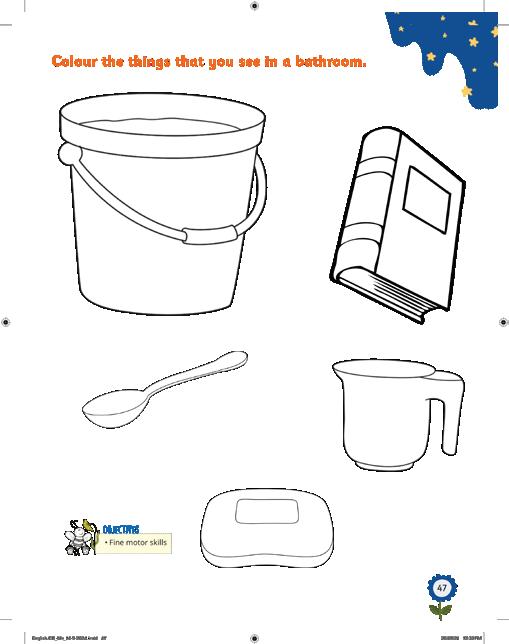
LO: Children will revise the rectangle shape through a fun activity and craft. Resources: 3 rectangule cut-outs (to make train compartments) per child; drawing sheets (1 per child); crayons; tape or chalk
1. Warm-Up: Walk around the classroom with the children. Point and say: Can you find anything shaped like a rectangle? Help them spot things like: a book, blackboard, window, mat, etc. Clap and cheer each time someone finds a rectangle!
2. Hopping Game: Use tape or chalk to make 4–5 big rectangle shapes on the floor. Call 4–5 children at a time, say: When I say GO, hop into a rectangle! Children move around, and on your signal, they hop into any rectangle shape. Play fun music if available for added excitement!

3. Making a Train: Give the materials to children. Ask them to paste the rectangles in a line to create a train. Help them draw small wheels or use circular stickers to decorate.
LO: Children will develop gross motor skills by moving like different animals and birds. Resources: STEM Exploration pages 22–24; pictures of animals like an elephant, duck, bird and snake
1. Recap: Show the pictures of an elephant and say: This is an elephant, and ask children to repeat after you. Then ask children to stomp like an elephant. Repeat the same for the snake, bird and the duck.
2. Animal March: Call children one by one and ask them to pick up an animal card. Then, ask them to move like that animal while the others guess its name. Follow the instructions given on pages 22–24 and guide children to solve question 5.





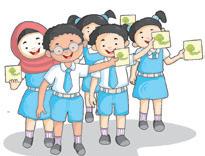

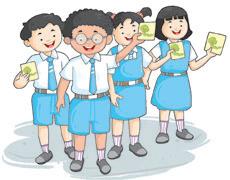








Domain General Awareness
Learning Outcome Children will identify different ways of saving water.
Resources A soft toy; General Awareness, page 64
Suggested Method Pass around a soft toy. When you say STOP, the child holding the soft toy shares one way in which we can save water. Ensure everyone gets a turn.
Support for Struggling Learners
Gather the learners together and ask: Why do we need water? Welcome all responses and say: We need to save water. We use water for drinking, cleaning, washing, etc. Show pictures from page 64 of the General Awareness book, and help children identify different ways of saving water.
Domain Foundational Literacy
Learning Outcome Children will describe the picture of the story Rohan’s Bath Time
Resources Literacy Skillbook, page 46
Suggested Method Call children one by one, point to any picture from page 46 of the Skillbook and ask the child to describe it. Encourage them to describe in their home language or mixed language, if required. Ensure everyone gets a turn it.
Support for Struggling Learners
Pair a struggling learner with a confident learner. Ask them to refer to page 46 of the Skillbook. Let the buddy describe the pictures from the book to the learner.
Domain Foundational Numeracy
Learning Outcome Children will identify the shape of a rectangle and trace it.
Resources Chalks; objects of different shapes (including rectangles); shape flashcards (from Skillbook)
Suggested Method Call children one by one. Guide children to identify objects that are rectangular. Draw a rectangle on the board and ask children to trace it with chalk. Ensure everyone gets a turn and cheer for them.
Support for Struggling Learners
Draw a rectangle on the board and say: This is a rectangle. Then, ask children to hold up the flashcard showing a rectangle shape. Then, draw a rectangle on the floor and guide children to trace the shape with their index finger.


















Circle Time Yoga and Meditation
General Awareness Story: The Sleepy Moon
Foundational Literacy Letter Ss Literacy Skillbook, page 48
Foundational Numeracy Revising Shapes using Concrete Objects
DIY A Pet Dog Art and Craft, page 22
LO: Children will practise some simple exercises and a balancing pose.
Resources: Soft music
1. Warm-Up: Say: Let us wake up our bodies! Give commands like:
• Wiggle your fingers and toes.
• Stretch arms to the sky.
• Bend down and touch your toes.
• Do a few gentle jumps.
2. Balancing Pose: Guide children to try a balancing pose. Say: Spread your arms like wings. Now stand on one foot and fly like a bird! (Switch legs after a few seconds.)
To make it more challenging, you can add a timer to this activity. For example, say: Stand on one leg till I count 10.
3. Cool Down: Play soft music. Ask children to sit down with their eyes closed and breathe in and out several times.


LO: Children will listen to and discuss the story The Sleepy Moon.
Introduction
1. Warm-Up Discussion: Begin by asking: What do we see in a morning sky? Welcome responses like sun, clouds, birds, etc. Then ask: What can we see in the sky at night? Let children share their responses. Then say: Today we will listen to a story about the moon.
2. Story Time: Narrate the story The Sleepy Moon with expressions and voice modulation. Then ask simple questions to discuss the story:
• Who was sleepy?
• Who helped the moon come out?
3. Acting Time: Invite children to act like the sleepy moon:
• Close their eyes and pretend to snore.
• Stretch and slowly rise.
• Shine by raising their arms and smiling.
Once upon a time, there was a big, round Moon who loved to sleep.
One night, the Moon was too sleepy to wake up.
“I’m staying in bed,” he yawned.
The stars twinkled and said, “Wake up, Moon!”
But the Moon just snored—Zzz!
Then the children and animals called, “Dear Moon, we need your light!”
The Moon heard them, smiled, and stretched.
He rose into the sky, shining bright.
“Yay! The Moon is back!” Everyone cheered.
Look at the sky at night. Try to find the moon and observe its shape.







LO: Children will identify the objects starting with the /s/ sound of letters Ss. Resources: Literacy Skillbook, page 48; some objects starting with /s/ sound (socks, spoon, stickers, soap, star cut-out)
1. Warm-Up: Show the objects to the children, emphasising the /s/ sound and say its name clearly. Draw their attention to the beginning sound of the words. Say: /s/ /s/ spoon. Ask children to repeat after you.
2. Objects with Letter Ss: Turn to page 48 of the Skillbook and point to each picture one by one.
Say the names aloud emphasising the beginning sound /s/. Encourage children to say the words clearly, focusing on the /s/ sound. Example: /s/ /s/ sun.
3. Reinforcing the /s/ Sound: Read the text given on page 48 several times, highlighting the /s/ sound. Encourage children to listen carefully and repeat after you.







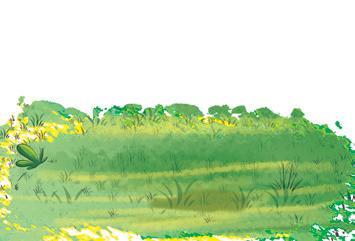

Look for objects at home that start with the /s/ sound.

LO: Children will identify and sort objects shaped like circles, squares, triangles, and rectangles. Resources: Objects like bangles, bottle cap, plate, napkin, box lid, hanger, party cap, ice-cream cone, book, pencil box; four boxes
1. Recalling Shapes: Show real classroom objects one at a time and ask: What shape do you see?
Use objects like:
• Circle: Plate, bottle cap
• Square: Napkin, box lid
• Triangle: Hanger, party cap, ice-cream cone
• Rectangle: Book, pencil box
Encourage children to touch and feel the objects. Let them repeat the shape name.
2. Sorting Shapes: Place four baskets labelled (or verbally named) as circle, square, triangle, and rectangle. Call children one by one and give them real classroom objects to place in the correct basket. Assist those who need help.
LO: Children will develop fine motor skills by making spots on a dog using thumbprints.
Resources: Art and Craft, page 22; black paint and a bowl
1. Warm-Up Talk: Ask: Who has a pet dog? Let children with pet dogs share their answers and describe what they do with their pets. Then ask children to share what colour dogs they have seen. Welcome all responses.
2. A Pet Dog: Ask children to open page 22 of the Art and Craft book. Demonstrate and guide them to dip their thumbs in the black paint and make thumbprints on the marked spots.




Circle Time
Things I Love to Do
General Awareness Elements in the Sky
Foundational Literacy Letter Ss Literacy Skillbook, page 48
Foundational Numeracy A Fun Game on Shapes
DIY Rhyme: Thank You, Mr Sun Rhymes and Stories, page 41
LO: Children will share what they enjoy doing in their free time.
Resources: A soft toy
1. Warm-Up: Say: Let us talk about things we like to do! I like to draw pictures. What do you like to do? Model an answer to show the children. Say, for example: I like to draw.
2. Sharing Time: Pass a soft toy or ball around the circle. When a child receives it, ask gently: What do you like to do? / Do you like to draw, play, dance, or sing? If they are shy, offer options or let them point. Encourage each child to participate in the activity.


LO: Children will recite a rhyme and learn about elements in the sky through discussion and movement.
1. Looking Up: Say: Let us all close our eyes and think of the sky. What are the things we can see? Let children respond freely. Acknowledge all answers with enthusiasm.
2. Rhyme Time: Recite the rhyme Up in the Sky with voice modulation and expressions and ask the children to follow. Recite 3–4 times for reinforcement.
Up in the Sky Sun and moon up in the sky, Clouds and stars go floating by. In the day and in the night, The sky is so bright! Sun and moon up in the sky, Let’s all wave and say goodbye!
3. Sky Movement Game: Call out sky elements one by one and guide children to act them out:
• Sun: Stretch arms wide and say “I shine!”
• Moon: Curl up like you’re sleeping.

• Cloud: Walk around slowly with soft movements.
• Stars: Wiggle your fingers like stars and say: Twinkle, twinkle!
If possible, take children to an open space and let them observe the sky. Ask them to share what they see.







LO: Children will recognise the sound and symbol of letters Ss.
Resources: Literacy Skillbook, page 48
Introduction
1. Recap: Point to the pictures on page 48 of the Skillbook and say their names aloud, emphasising the /s/ sound at the beginning. Ask children to repeat after you.
2. Reinforcing the /s/ Sound: Read the text given on page 48 aloud a few times, emphasising the /s/ sound. Encourage children to repeat after you.
3. Blackboard Practice: Write letter S on the board. Point to letter S and ask children to repeat after you: S says /s/ /s/ /s/. Repeat 7–8 times.
4. Blackboard Show: Invite children to trace letter S on the board – first with their finger and then with chalk. Encourage them to say S says /s/ /s/ /s/.









LO: Children will play a fun game of identifying the shapes—circle, square, rectangle and triangle. Resources: Shapes flashcards (from Skillbook); cutouts of all 4 shapes
Introduction
1. Recap: Show the cut-outs of all shapes one by one and ask: What shape is this? Let children share their responses. Then say aloud the name of the shape and ask children to repeat after you.
2. Shape Matching: Hand out the flashcards to the children. Call children one by one and lay the cutouts of the shapes on the table. Ask them to match the flashcards with the correct shapes. Guide the children, if they face any difficulty in identifying the shapes. Ensure everyone gets a turn.
Look for objects of different shapes at home. Match the objects that are of same shape with the help of an adult.
LO: Children will listen to and recite the rhyme Thank You, Mr Sun.
Resources: Rhymes and Stories, page 41
1. Warm-Up: Begin by asking: When do you see the sun? Let children share their answers, then say: We see the sun in the daytime. Then ask: How do you feel when you go out in the sun? Welcome all responses.
2. Rhyme Time: Recite the rhyme Thank You, Mr Sun with voice modulation and expressions. Repeat 3–4 times and ask children to sing along.



Circle Time
Fun with Numbers
General Awareness Story: The Sun and the Birds
General Awareness, page 56
Foundational Literacy Letter Ss Literacy Skillbook, page 49
Foundational Numeracy Shapes Together Numeracy Skillbook, pages 57–58
DIY Rhyme: Thank You, Mr Sun!
Rhymes and Stories, page 41
LO: Children will recognise and count numbers from 1–10 through a fun activity.
Resources: Number flashcards (from Numeracy Skillbook)
1. Counting from 1–10: Begin the session by asking children to count from 1 to 10 Write the numbers on the board as you count. Count with the help of fingers as well.
2. Game Time: Place the flashcards neatly in a row or in a circle, in a random order. Call children one by one and give them a number. The children need to find that number and do an action that many times. For example: Find number 8. Count and clap 8 times. Ensure everyone gets a turn.

LO: Children will listen to the story The Sun and the Birds.
Resources: General Awareness, page 56
1. Warm-Up Discussion: Begin by asking: What do we see in the sky during the morning? (Expected: sun, birds, clouds) And what do we see at night? (Expected: moon, stars, dark clouds)
Encourage all answers. You can guide gently by adding examples.
2. Day or Night Sky: Tell the children: When I say something from the morning sky, stand up and stretch like the sun! When I say something from the night sky, curl up like the moon! Now call out a mix of items one by one, example: sun, stars, birds, clouds, moon and so on.
3. Picture Talk: Ask children to open page 56 of the General Awareness book. Guide them to look at the pictures and discuss them. Ask questions like:
• What time of the day is it—day or night?
• What do you see in the sky?
• How many birds are there?
• Where is the sun?
4. Interactive Read Aloud: Read aloud the story The Sun and the Birds with expressions and voice modulations. Pause in between to show pictures and ask questions like:
• Who is shining behind the clouds?
• Who is asking the sun to play?
• What is the sun playing with the birds?







LO: Children will recognise the sound and symbol of letters Ss.
Resources: Literacy Skillbook, page 49
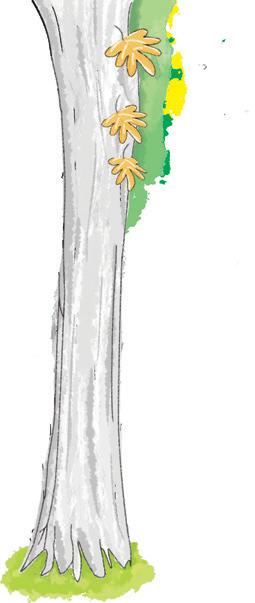

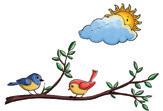
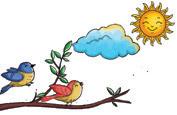




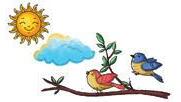
You can ask the children to look at the sky and observe whether the sun is shining bright or hiding behind the clouds.
1. Recap: Ask children to name some words starting with /s/ sound. Guide them to emphasise on the /s/ sound as they say each word. For example: /s/ /s/ soap.
2. Symbols Ss: Write capital S on the board and explain the steps for writing s. Refer to the arrows on page 45 for guidance. Say: S is a left curve and a right curve. Guide them to trace letter S in the air with their index fingers. Ask them to say: S says /s/ /s/ /s/. Repeat the same for small letter s.
3. Tracing Letter Ss: Write capital letter S and small letter s on the board. Call the children one by one and guide them to trace the letters with their index fingers.
4. Letter Ss: Ask children to open page 49 of the Skillbook. First, ask them to trace letters Ss with their index fingers and then with crayons. Then, guide them to say: /s/ /s/ spiders and trace the dots to help the spiders reach the stars.







Trace S in your notebook or in a drawing sheet with the help of crayons.



LO: Children will identify different shapes and match them correctly.
Resources: Numeracy Skillbook, pages 57–58; shape flashcards (from Skillbook)
1. Recap: Hand out the shape flashcards to the children. Call out the name of a shape and ask them to hold up the matching flashcard. Monitor and guide as required.
2. Matching Shapes: Ask children to open page 57 of the Skillbook. Guide them to identify the shapes and match each shape correctly. Then point to the shapes (circle and square) and say them aloud.
3. Shapes Together: Ask children to open page 58 of the Skillbook. Guide them to identify each shape and colour the matching shape in each row. Then, point to the shapes (triangle and rectangle) and say them aloud.





























LO: Children will recite the rhyme Thank You, Mr Sun and play a fun game based on the rhyme.
Resources: Rhymes and Stories, page 41
1. Rhyme Time: Recite the rhyme Thank You, Mr Sun! with voice modulation and expressions. Repeat 3–4 times along with children.
2. Game Time: Play a game where you give fun directions using “Sun says…” Children follow only if you say “Sun says” first. For example: Sun says… stretch your arms! – they move. Jump like the Sun is hot! – they stay still. Add more actions like: Sun says… smile bright! / Spin like the Earth! Keep it playful and simple!


Domain
Topic of the Day
Circle Time Nature Talk
General Awareness A Hot Day
Book & Page
General Awareness, pages 67–68
Foundational Literacy Letter Ss Literacy Workbook, page 30
Foundational Numeracy Shapes Together Numeracy Workbook, page 35
DIY Melting Ice Experiment
LO: Children will learn why nature is important and share how to take care of it.
Resources: Flowers; leaves; bowl of water; stones
1. Warm-Up: Sit in a circle and say: We live in a beautiful world—with trees, flowers, water, and animals. That’s called our environment! Ask simple questions: Have you seen trees or flowers near your home? / What colour is the sky? Let children respond in their home or mixed language.
2. Nature Exploration: Let children explore the different elements of nature. Create a Nature Table using: a few leaves (collected beforehand), small stones, a bowl of water and a flower. Let children touch, feel, and talk about each object. Say: Leaves grow on trees. Trees give us air. Water helps plants grow.
3. Knowing from Children: Let each child share one way in which they would like to take care of nature. Encourage children to share in their home language or mixed language. If possible, take children out in the school garden for this activity.

LO: Children will talk about a hot day and identify activities done on a hot day.
Resources: General Awareness, pages 67–68
1. Setting the Context: Begin by gently fanning your face with your hand and say:

The sun is so bright! Oh! It feels like a hot day today! Ask:
• What do we do when it’s very hot?
• Do we wear sweaters or t-shirts?
• Do we drink hot soup or cold water? Let children share their ideas freely. Use body language and expressions to make it relatable.
2. Fun with Movements: Say: Let us pretend it’s a hot day! Do actions like: Wiping your face / Fanning your face / Pretending to sip water. End with: On a hot day, we take care of ourselves by drinking water, wearing a cap, and staying cool!
3. Picture Talk: Ask children to open page 67 of the General Awareness book. Guide them to observe the picture and ask questions like:
• Do you see the sun?
• Do you think it is a hot day or a cold day?
• What are the father and the mother doing?
• Who is drinking water?
• What is the girl doing?
• What is the dog doing?
At the end ask: How many of you like to drink juice and have ice-cream on a hot day? What other food do you like to eat?
4. Activities on a Hot Day: Ask children to open page 68 of the General Awareness book. Guide them to identify and circle the activities done on a hot day.







LO: Children will identify letters Ss and objects starting with /s/ sound. Resources: Literacy Workbook, page 30

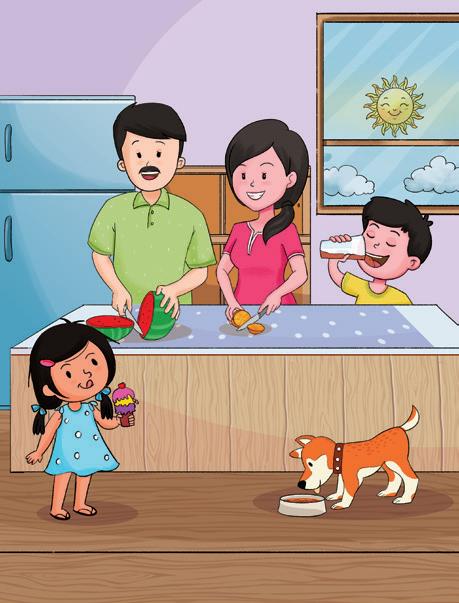





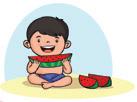
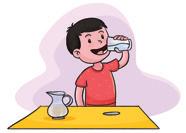
1. Listening to Words: Say some words in a random order. Ask the children to jump when they hear a word that begins with the /s/ sound. Examples: apple, sun, car, soap, rice, star and so on.
2. Identifying Symbols Ss: Write some letters on the board, including letters Ss. Call children one by one and guide them to identify and point to the letters Ss.
3. Letter Ss: Ask children to open page 30 of the Workbook. First guide them to identify the pictures starting with /s/ sound and match them with letters Ss. Then, ask them to circle letters Ss.









LO: Children will trace and colour the same shapes in each row.
Resources: Numeracy Workbook, page 35
1. Same and Different: Draw two same shapes and two different shapes on the board. Guide children to identify the same shapes and the different shapes. Name the shapes and ask children to repeat after you.
2. Shapes Together: Ask children to open page 35 of the Workbook. Guide them to identify the same shapes in each row and trace them. Also, say aloud the names of the shapes that are different.


Refer to page 35 of the Workbook and colour the shapes that are same in each row.
LO: Children will observe and describe what happens when ice melts.
Resources: Ice cubes; transparent glass or bowls
1. Warm-Up: Gather children in a circle, if possible. Show an ice cube. Ask: What is this? / How does it feel? (Pass the cube quickly for a quick touch.) Say: This is ice. It is very cold. What do you think will happen if we keep it outside for some time? Welcome all responses.
2. Melting Ice Experiment: Keep a few ice cubes in small bowls or glass. Place them on a table where children can see. Say: Let us watch what happens! Every few minutes, guide children to observe: Is it getting smaller now? / What do you see in the bowl? Use simple words: The ice is melting! It’s turning into water!








Domain
Learning Outcome
Children will identify hot weather and share what we do on a hot day.
Resources General Awareness, page 67; a soft toy
Suggested Method Pass around a soft toy. When you say STOP, the child holding the soft toy shares one thing we can do on a hot day. Give them some situations and ask-
• Do we eat ice cream or drink hot soup?
• Do we wear a jacket or a t-shirt?
• What do we see in the sky during the day?
• Do we feel hot or cold during a hot day?
Ensure everyone gets a turn and cheers for all children.
Support for Struggling Learners
Domain
Gather the learners together and ask: How do you feel on a hot day? Can you say something that you like to do on a hot day? Discuss the picture from page 67 of the General Awareness book. Point to the items and discuss them. For example: The father is cutting a watermelon. / The girl is eating ice cream.
Learning Outcome Children can identify the /s/ sound and recognise letters Ss.
Resources Some objects starting with /s/ sound; chalks; letter flashcard (from Skillbook)
Suggested Method Call children one by one and ask them to pick an object that starts with /s/ sound and say its name aloud. Then, write letters Ss on the board and ask them to trace it on the board with chalk. Ensure everyone gets a turn.
Support for Struggling Learners
Gather the struggling learners together. Write S and s on the board and guide them to say: S says /s/ /s/ /s/. Ask the children to hold and show the flashcard with the letter Ss. Then, show them pictures of objects starting with /s/ sound from page 48 of the Skillbook. Say, for example: /s/ /s/ sun
Finally, guide the children to trace the letters Ss in the air with their index fingers.
Domain Foundational Numeracy

Learning Outcome Children will identify and match basic shapes.
Resources Shapes flashcards (from Skillbook); chalks
Suggested Method Invite children one at a time. Draw three matching shapes and one different shape on the board. Ask them to spot and name the odd shape, then identify the shapes that are the same. Make sure everyone gets a chance, and encourage each child with a cheer.
Support for Struggling Learners
Draw a triangle on the board and say: This is a triangle. Then, ask children to hold up the flashcard showing a triangle shape and a triangle object. Repeat the same for the other shapes.



































Circle Time Target and Throw
General Awareness A Cold Day
Book & Page
General Awareness, pages 69–70
Foundational Literacy Letter Tt Literacy Skillbook, page 50
Foundational Numeracy Numbers 1–10
DIY Flag Hoisting
Numeracy Skillbook, page 59; Numeracy Workbook, page 36
Art and Craft, page 23
LO: Children will develop their fine motor skills by crumpling newspaper into paper balls.
Resources: Some old newspaper or waste paper; a box
1. Warm-Up: Gather all children in a circle. Say with excitement: Let us wake up our fingers! Guide them to wiggle their fingers fast as if shaking water off their hands. Then, guide them to wiggle slowly, like tiny caterpillars crawling. Next, show them how to tap their fingers gently on their laps, like tiny raindrops falling. Repeat the sequence once to warm up their little fingers nicely.
2. Crumpling Paper: Give each child a small piece of waste or scrap paper (easy to crumple). Model first and ask children to observe. Slowly use your fingertips to crumple your paper into a small ball. Emphasise using just fingers, not the whole palm. Encourage the children and say: Now it’s your turn! Use your fingers and make a paper ball!
3. Target and Throw: Once they have their paper balls, place a basket or box a short distance away. Say to them: Let’s toss our paper balls into the basket! Try to throw it gently with one hand. Let each child have a few turns, and celebrate every attempt with claps and cheers.

LO: Children will identify the winter season and clothes we wear in winter.
Resources: General Awareness, pages 69–70; a sweater; a jacket; a woolen cap; a muffler; gloves
1. Warm-Up: Say: It’s so cold! Pretend to shiver and rub your hands together. Ask: What do you do when it’s cold? Let children share their responses freely.

2. Winter Clothes: Show the winter clothes one by one to the children and name them. Let children touch them and say: We wear warm clothes when it’s cold! Pretend to wear gloves, a jacket, a cap, and a muffler.
3. A Cold Day: Ask children to open page 69 of the General Awareness book and observe the picture. Guide them to discuss the picture by asking them questions:
• What are the children having?
• What is the mother doing?
• What is the father doing?
• What is the dog doing?
• What else do you see in the picture?

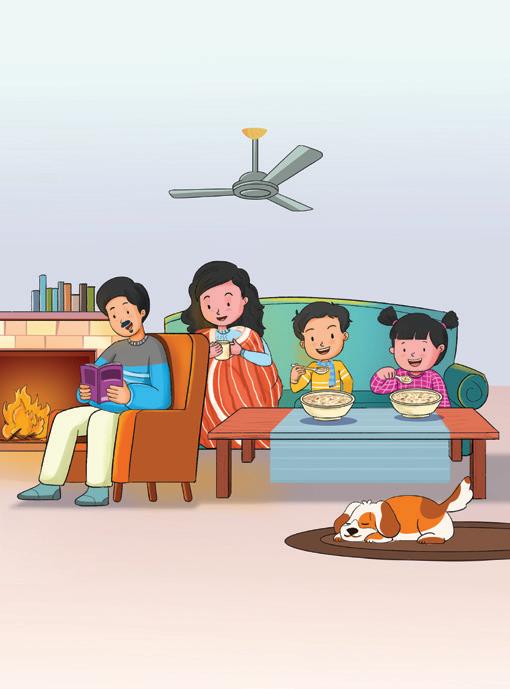
4. Winter Clothes: Ask children to open page 70 of the General Awareness book. Guide them to identify and circle the clothes worn on a cold day.
You can also talk about the kinds of food we enjoy on a cold day.








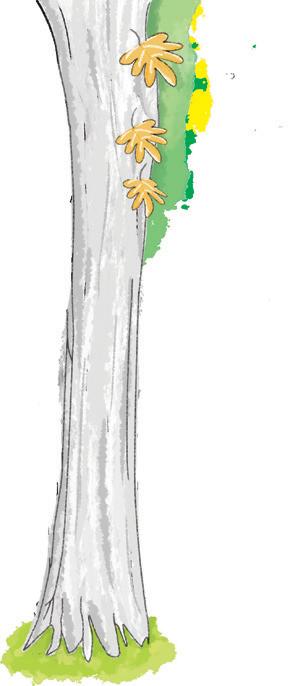

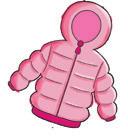
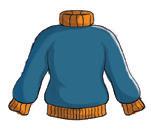
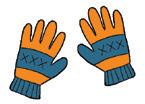
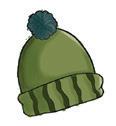



LO: Children will identify objects starting with the /t/ sound of letters Tt.
Resources: Literacy Skillbook, page 50; objects that begin with the /t/ sound (torch, toothbrush, table, tiffin box, tomato, etc.)
1. Warm-Up: Show the objects to the children, emphasising on the /t/ sound and say its name clearly. Draw their attention to the beginning sound of the words. Say: /t/ /t/ table. Ask children to repeat after you.
2. Objects with Letters Tt: Turn to page 50 of the Skillbook and point to each picture one by one. Say the names aloud emphasising on the beginning sound /t/. Encourage children to say the words clearly, focusing on the /t/ sound. Example: /t/ /t/ tomato or /t/ /t/ tiger
3. Reinforcing the /t/ Sound: Read the text given on page 50 several times, highlighting the /t/ sound. Encourage children to listen carefully and repeat after you.



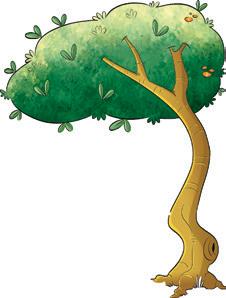


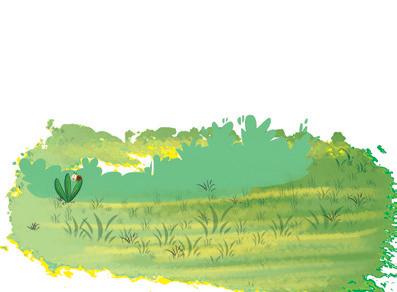


LO: Children will recall numbers from 1 to 10 by writing them and joining number dots in sequence. Resources: Numeracy Skillbook, page 59; Numeracy Workbook, page 36; number flashcards (from Skillbook)
1. Recalling Numbers 1–10: Hand out the number flashcards to the children. Ask them to arrange the cards in a sequence, starting from 1 to 10. Monitor and guide children as required.
2. Tracing Numbers 1–10: Guide children to trace the numbers from 1 to 10 on the flashcard with their index fingers. Move around to check if children are tracing correctly. Ask them to trace each number at least 3 times.
3. Writing Numbers 1 to 10: Ask children to open page 59 of the Skillbook. Guide them to solve the page by tracing the dots to form the numbers 1 to 10 and then writing the numbers from 1 to 10.
4. A Cat: Ask children to open page 36 of the Workbook. Guide them to join the dots in order to complete the picture of a cat.








LO: Children will identify the colours of India’s national flag and colour it. Resources: Art and Craft, page 23; a national flag; crayon set
1. Identifying the National Flag: Show the flag and say: This is the national flag of India. Have you seen this anywhere? Let children share their responses. Then say: We hoist the national flag in our school on Independence Day (15th August) and on Republic Day (26th January).
2. Colour of the Flag: Help children identify the colours of the national flag. Point to each colour on the flag and name the colours—saffron, white, and green; with a blue Ashok Chakra in between.
3. Flag Hoisting: Ask children to colour the Indian flag given on page 23 of the Art and Craft book. Guide them to choose the correct crayons for colouring the flag. Assist those who need help.


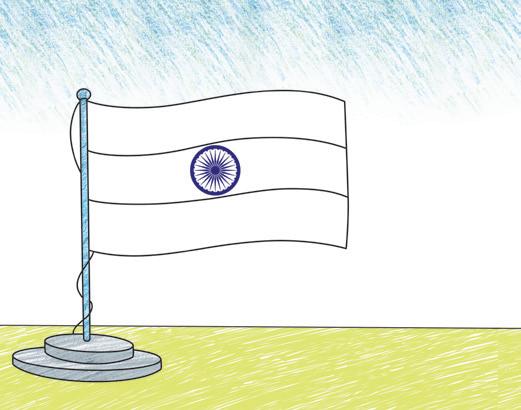



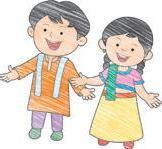

Domain
Topic of the Day
Circle Time Game: Traffic Light
General Awareness A Rainy Day
Book & Page
General Awareness, pages 71–72
Foundational Literacy Letter Tt Literacy Skillbook, page 50
Foundational Numeracy Writing Numbers 1 to 10 Numeracy Workbook, page 37
DIY Making a National Flag
LO: Children will develop their listening skills and engage in body movements.
1. Warm-Up: Gather children in a circle. Say: Let’s wake up our bodies! Guide them through simple stretches:
• Stretch your arms up to the sky.
• Bend down and touch your toes.
• Roll shoulders gently.
• Tap your knees with hands.
2. Traffic Light Game: Say: We are going to pretend we are cars on the road! Explain the rules:
• When I say “Green,” you walk quickly around the room.
• When I say “Yellow,” you walk slowly.
• When I say “Red,” you must freeze like a statue and not move at all Begin the game slowly, calling out the colours one at a time. After they understand, mix up the colours quickly to make it more fun and challenging. Remind children to listen carefully and move safely without bumping into each other.
If there is no space to walk around in the class, the children can walk on the spot to play the game.


LO: Children will recognise rainy weather, talk about it, and colour related pictures. Resources: General Awareness, pages 71–72; an umbrella; a raincoat
1. Warm-Up: Gather children in a circle. Ask: Have you seen rain? What happens when it rains? Encourage them to share simple answers like Water falls or I use an umbrella. If possible, make tapping sounds on a table or clap fingers softly to mimic rain. Say: This is how rain sounds! Keep the conversation lively and joyful.
2. Pretend Play: Show the umbrella and the raincoat and say: We use these to protect ourselves from rain. Tell the children Let’s pretend it is raining! Ask them to pretend to open an umbrella and jump over puddles. You can tap lightly on a table to make rain sounds while they act. Say: Oh no, it’s raining! Wear your raincoats.
3. A Rainy Day: Ask children to observe the picture given on page 71 of the General Awareness book. Guide them to discuss the picture by asking questions like:
• Who is jumping in the puddle?
• What is the girl doing?
• What are the parents doing?
• What do you see in the sky?
4. Colouring Time: Ask children to open page 72 of the General Awareness book and guide them to colour the umbrella and the raincoat to complete the picture.







LO: Children will identify the sound and symbol of letters Tt.
Resources: Literacy Skillbook, page 50

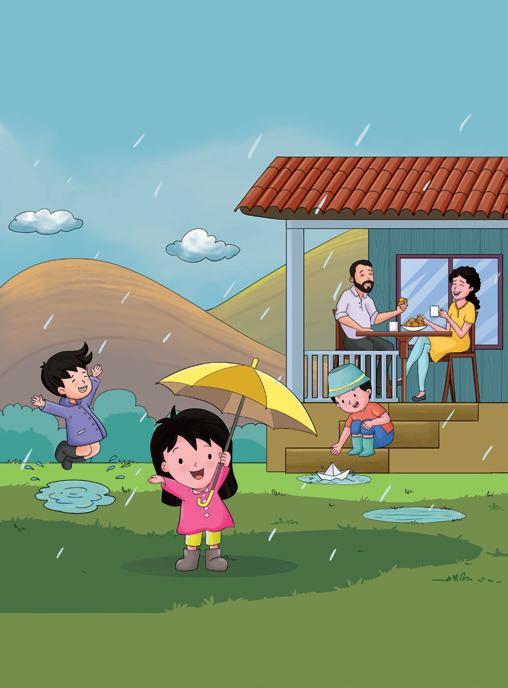




1. Recap: Point to the pictures on page 50 of the Skillbook and say their names aloud, emphasising the /t/ sounds at the beginning. Ask children to repeat after you.
2. Reinforcing /t/ Sounds: Read the text given on page 50 aloud a few times, emphasising the /t/ sound. Encourage children to repeat after you.
3. Blackboard Practice: Write letters Tt on the board. Point to the letters and ask children to repeat after you: T says /t/ /t/ /t/. Repeat 7–8 times.
4. Blackboard Show: Invite children to trace letters Tt on the board with their finger or a piece of chalk. Encourage them to say T says /t/ /t/ /t/.










LO: Children will identify, trace and write numbers 1 and 2.
Resources: Numeracy Workbook, page 37; Number flashcards (from Skillbook)
1. Identifying Numbers: Hand out the number flashcards to the children. Ask them to identify and hold up the flashcards of numbers 1 and 2. Monitor and guide as required.
2. Tracing Numbers 1 and 2: Write numbers 1 and 2 on the board. Call children one by one and ask them to trace the numbers on the board with their index fingers.
3. Writing Numbers 1 and 2: Ask children to open page 37 of the Workbook. Guide them to trace the dots to form 1 and 2. Then, ask them to write the numbers only in the first 2 rows.


Refer to page 37 of the Workbook. Write numbers 1 and 2 in the third row.
LO: Children will identify the Indian flag and develop their fine motor skills by using fingerprints to make a national flag.
Resources: Rectangular white sheet (1 per child); saffron, white and green paint; blue crayon
1. Talking About the Flag: Gather children in a circle. Say: Can you tell me the colours of the Indian Flag? Help them recall saffron, white and green. Say: There is also a blue wheel called the Ashoka Chakra in the centre! We feel proud when we see our national flag!
2. Making Flag with Fingerprint: Give each child a plain sheet of paper. Help them dip their fingers lightly in saffron paint and make fingerprints in a straight line across the top. Then, leave the middle section white. Next, use green paint to make prints at the bottom. Draw a small blue circle (Ashoka Chakra) in the centre with a blue crayon or marker. Say: Let’s make our flag with our little fingers! Assist those who need help.
Make sure the flag is made horizontally and not vertically.
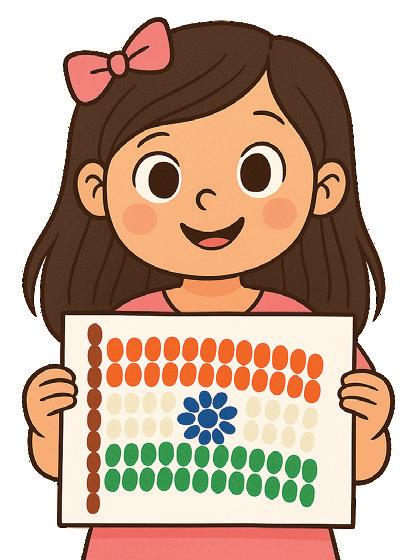
Domain Topic of the Day
Circle Time
Obstacle Walk
General Awareness Practice on Weather
Book & Page
General Awareness, pages 73–74
Foundational Literacy Letter Tt Literacy Skillbook, page 51
Foundational Numeracy Writing Numbers Numeracy Workbook, page 38
DIY Story: Raksha Bandhan
Rhymes and Stories, pages 42–47
LO: Children will develop cognitive and gross motor skills by following simple instructions.
Resources: Chairs; rope; chalk
1. Warm-Up: Gather the children in a line. Say: Today we’re going to play a fun game! We’ll walk, jump, and stop carefully. Show them how to:
• Walk slowly around a chair
• Jump gently over a rope
• Stop at a chalk line
Say: We must use our brain and body together! Watch me first! Do a slow, clear demonstration with a smile. Invite a few children to try one action at a time.
2. Obstacle Walk: Set up a path with a chair, a rope, and a chalk line. Say: Now it’s your turn! Walk around the chair, jump over the rope, and stop at the line! Call children one at a time. Gently guide them if they forget a step. Repeat the activity so that everyone gets at least two turns.

LO: Children will identify and act out different types of weather—hot, cold, and rainy.
Resources: General Awareness, pages 73–74
1. Warm-Up: Gather children in a circle. Say: Let’s pretend the weather is changing! Ask: How do we feel when it is hot? Demonstrate wiping sweat from your forehead. Ask, How do we feel when it is cold? Show shivering and rubbing hands. Ask: What do we do when it rains? Show opening an umbrella and running. Encourage children to copy the actions happily.

2. Weather Walk: Say: Let’s go on a weather walk inside the class! Call out different weather types—hot, cold, rainy—and children act it out while walking. Say: Oh no, it’s hot! Wipe your face! or It’s raining! Open your umbrella! Keep the energy lively and joyful.
3. Weather: Ask children to open page 73 of the General Awareness book and trace the dotted lines to match each picture. Then, guide them to match the weather with the correct clothes on page 74. Assist those who need help.
You can ask the children to look outside or take them outside to identify the weather.







LO: Children will identify and trace the letters Tt.
Resources: Literacy Skillbook, page 51

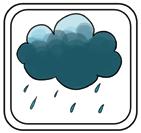










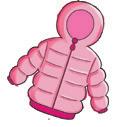
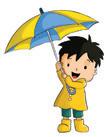
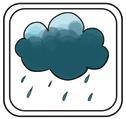
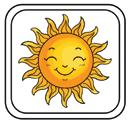
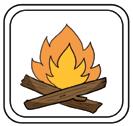
1. Recap: Ask children to name some words starting with /t/ sound. Guide them to emphasise on the /t/ sound as they say each word. For example: /t/ /t/ toy or /t/ /t/ tiger.
2. Symbol Tt: Write capital T on the board and explain the steps for writing T. Refer to the arrows on page 51 for guidance. Say: T is a standing line with a sleeping line on top. Guide them to trace letter T in the air using their index fingers. Ask them to say: T says /t/ /t/ t/. Repeat the same for the small letter t.


3. Tracing Letters Tt: Write capital letter T and small letter t on the floor or on the board. Call the children one by one and guide them to trace the letters using chalk.
Practice
4. Letters Tt: Ask children to open page 51 of the Skillbook. First, ask them to trace the letters Tt using their index fingers first and then with a crayon. Then, guide them to say: /t/ /t/ tomato and colour it using a red crayon.
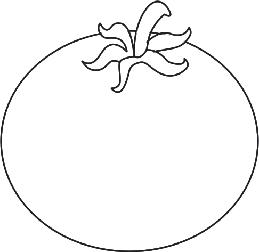

LO: Children will identify, trace, and write the numbers 3 and 4.
Resources: Numeracy Workbook, page 38; number flashcards (from Skillbook)
1. Identifying Numbers: Hand out the number flashcards to the children. Ask them to identify and hold up the flashcards for numbers 3 and 4. Monitor and guide as required.
2. Tracing Numbers 3 and 4: Write numbers 3 and 4 on the board. Call children one by one and ask them to trace the numbers on the board using their index fingers.
3. Writing Numbers 3 and 4: Ask children to open page 38 of the Workbook. Guide them to trace the dots to form 3 and 4. Then, ask them to write the numbers only in the first two rows.


Refer to page 38 of the Workbook. Write numbers 3 and 4 in the third row.
LO: Children will listen to and talk about the pictures of the story Raksha Bandhan Resources: Rhymes and Stories, pages 42–47
1. Warm-Up: Gather children in a circle, if possible. Say: Raksha Bandhan is a special day when sisters tie a Rakhi on their brothers’ wrists to show love. Show a rakhi tying action with your hands and say: A Rakhi is like a bracelet made with love! Keep it short, happy and cheerful.
2. Picture Talk: Ask children to open pages 42–47 of the Rhymes and Stories book. Discuss the pictures from the story by asking them questions like:
• What is the girl doing?
• What do you see in this picture?
• What is the boy doing?
Ensure each child participates and gives responses.
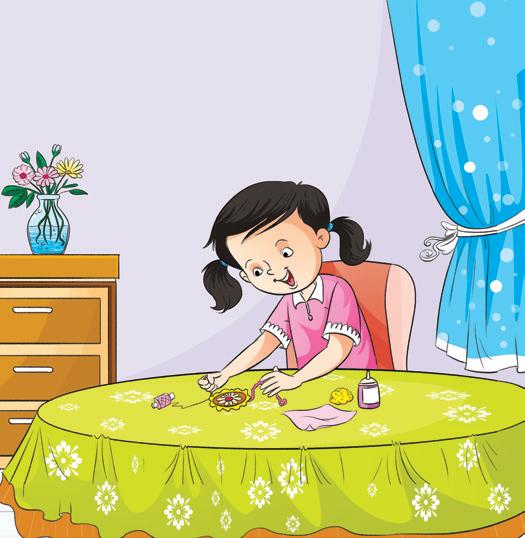

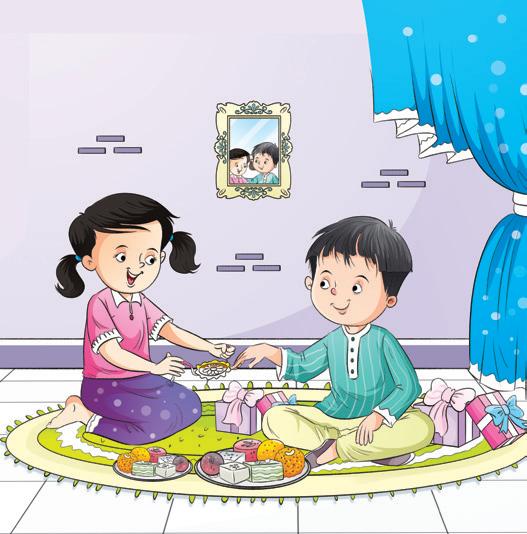

Domain
Circle Time
Mindfulness
Topic of the Day Book & Page
General Awareness Making a Rainbow
Foundational Literacy Letter Tt Literacy Workbook, page 31
Foundational Numeracy Writing Numbers Numeracy Workbook, page 39
DIY Story: Raksha Bandhan
Rhymes and Stories, pages 42–47
LO: Children will practise being calm, noticing their breathing, and feeling relaxed.
Resources: Soft music
1. Warm-Up: Gather the children in a circle. Say: Sometimes we feel happy, sad, or excited. Today, we’ll practise being calm like a quiet tree. Sit still with eyes closed for a few seconds. Say: Let’s try sitting very still and quiet! Play soft, calming music in the background while children sit quietly.
2. Breathing Exercise: Say: Let’s take a big breath like we’re smelling a flower… now blow out like we’re blowing a bubble! Breathe in through the nose, out through the mouth. Do it slowly together 3–4 times.

LO: Children will identify and colour the colours of a rainbow.
Resources: Drawing sheets (one per child); crayons
1. Talking about Rainbows: Gather children in a circle. Say: Sometimes after rain, we see a beautiful rainbow in the sky! Ask: What colours do you see in a rainbow? Help them name a few colours like red, yellow and blue. Make a big curved shape in the air with your hand and say: A rainbow looks like a big smile in the sky!
2. Drawing a Rainbow: Distribute the materials to the children. Guide them to draw big curved lines one after another. Then, guide children to colour the rainbow in the correct order of colours, beginning with red at the top, followed by orange, yellow, green, blue, indigo, and violet. Praise their efforts warmly by saying: Wow, your rainbow is so colourful!
You can display children’s work by hanging it in a corner of the classroom.







LO: Children will identify the symbols of letters Tt and objects starting with /t/ sound.
Resources: Literacy Workbook, page 31; some objects starting with different sounds, including /t/ sound
1. Spotting Letters Tt: Write some letters on the board, including letters Tt. Call children one by one and guide them to spot letters Tt. Ensure everyone gets a turn.
2. Identifying Objects with /t/ Sound: Call children one by one and ask children to identify an object starting with /t/ sound and say its name aloud. Ensure everyone gets a turn.
3. Letters Tt: Ask children to open page 31 of the Workbook. Guide them to match the objects starting with /t/ sound with letters Tt. Then, ask them to circle the letters Tt.
LO: Children will identify, trace, and write the numbers 5 and 6.
Resources: Numeracy Workbook, page 39; number flashcards (from Skillbook)











1. Identifying Numbers: Hand out the number flashcards to the children. Ask them to identify and hold up the flashcards showing the numbers 5 and 6. Monitor and guide as required.
2. Tracing Numbers 5 and 6: Write numbers 5 and 6 on the board. Call children one by one and ask them to trace the numbers on the board using their index fingers.

3. Writing Numbers 5 and 6: Ask children to open page 39 of the Workbook. Guide them to trace the dots to form 5 the numbers and 6. Then, ask them to write the numbers only in the first 2 rows.
Refer to page 39 of the Workbook. Write the numbers 5 and 6 in the third row.


LO: Children will listen to the story Raksha Bandhan and make a Rakhi. Resources: Rhymes and Stories, pages 42–47; colourful threads or wool; pre-cut paper circles or flowers; glue; small stickers or tiny pieces of coloured paper for decoration
1. Interactive Read Aloud: Read aloud the story Raksha Bandhan with expressions and voice modulations. Make pauses in between to show pictures and ask relevant questions. Ask questions like:
• Who is making a Rakhi?
• Where did Arushi tie the Rakhi?
• Who gives a gift to Arushi?
• Was Arushi happy?



2. Making a Rakhi: Give each child a small piece of colourful thread or wool. Help them stick a small paper flower or round paper cutout in the centre. Let them decorate it with simple things like small stickers or bits of coloured paper. Say, Let’s make a beautiful Rakhi for someone we love! Encourage and praise every child warmly. Assist those who need help.








Domain
General Awareness
Learning Outcome Children will share one thing they like to do on a cold day and on a rainy day.
Resources A soft toy; General Awareness, page 69
Suggested Method Pass around a soft toy. When you say STOP, the children holding the soft toy share one thing they like to do on a cold day and on a rainy day. Ensure everyone gets a turn and cheer for all children.
Support for Struggling Learners
Gather the learners together and ask: How do you feel on a cold day? Can you say something that you like to do on a cold day? Discuss the picture from page 69 of the General Awareness book. Point to the items and discuss them. For example: The father is sitting near the fireplace. / The children are having some soup
Domain Foundational Literacy
Learning Outcome Children can identify the /t/ sound and recognise the letters Tt.
Resources Literacy Skillbook, page 50; letter T flashcard (from Skillbook) some objects starting with /t/ sound and other sounds; chalk
Suggested Method
Support for Struggling Learners
Call children one by one and ask them to pick an object that starts with /t/ sound and say its name aloud. Then, write the letters Tt on the board and ask the children to holdup the flashcard showing letter T. Ensure everyone gets a turn.
Gather the struggling learners together. Write T and t on the board and guide them to say: T says /t/ /t/ /t/. Then, show them pictures of objects starting with /t/ sound from page 50 of the Skillbook. Say, for example: /t/ /t/ tiger. Finally, guide the children to trace the letters Tt in the air using their index fingers.
Domain Foundational Numeracy
Learning Outcome Children will identify and write numbers from 1 to 6.
Resources Number flashcards (from Skillbook); chalks
Suggested Method
Support for Struggling Learners
Call children one by one. Give each child any two numbers between 1 and 6 (e.g., 2 and 5) and ask them to write them on the board. Then, ask them to identify and show the flashcards with the numbers 2 and 5 written. Ensure everyone gets a turn and cheer for all children.
Give the number flashcards of 1–6 to children. Write number 1 and say: This is 1. Then, ask children to hold up the flashcard showing 1 and guide them to trace the number on the flashcard with their index fingers. Repeat the same for numbers 2–6.


















The early years shape a child’s cognitive, social, and emotional growth. The DAWN Curriculum, aligned with NEP 2020 and NCF-FS 2022, integrates the Panchakosha framework to nurture well-rounded development—physical, emotional, intellectual, social, and moral. This manual ensures progressive, engaging, and hands-on learning through a structured teaching model, and provides special days dedicated for reinforcement and enrichment activities.
Equipped with helpful alerts, pro-tips, and best practices, this manual makes teaching seamless, interactive, and impactful. With play-based activities and multisensory techniques, teachers can confidently create a stimulating, joyful, and inclusive classroom.
• 180-Day Teaching Plan: Well-paced progression with built-in revision days.
• 4+1 Teaching Model: Structured learning with a dedicated reinforcement day.
• Panchakosha Framework: A holistic approach to early childhood development.
• DIY & Hands-on Learning: STEM, Art & Craft, storytelling, and interactive activities.
• Dynamic Circle Time: Engaging discussions, mindfulness, and movement-based activities.
• Multisensory & Play-Based Approach: Enhancing retention through interactive learning.
• Error Alerts & Pro-Tips: Practical guidance for smooth and effective teaching.
Uolo partners with K-12 schools to provide technology-enabled learning programs. We believe that pedagogy and technology must come together to deliver scalable learning experiences that generate measurable outcomes. Uolo is trusted by over 15,000+ schools across India, Southeast Asia and the Middle East.
ISBN 978-81-985187-8-1

hello@uolo.com